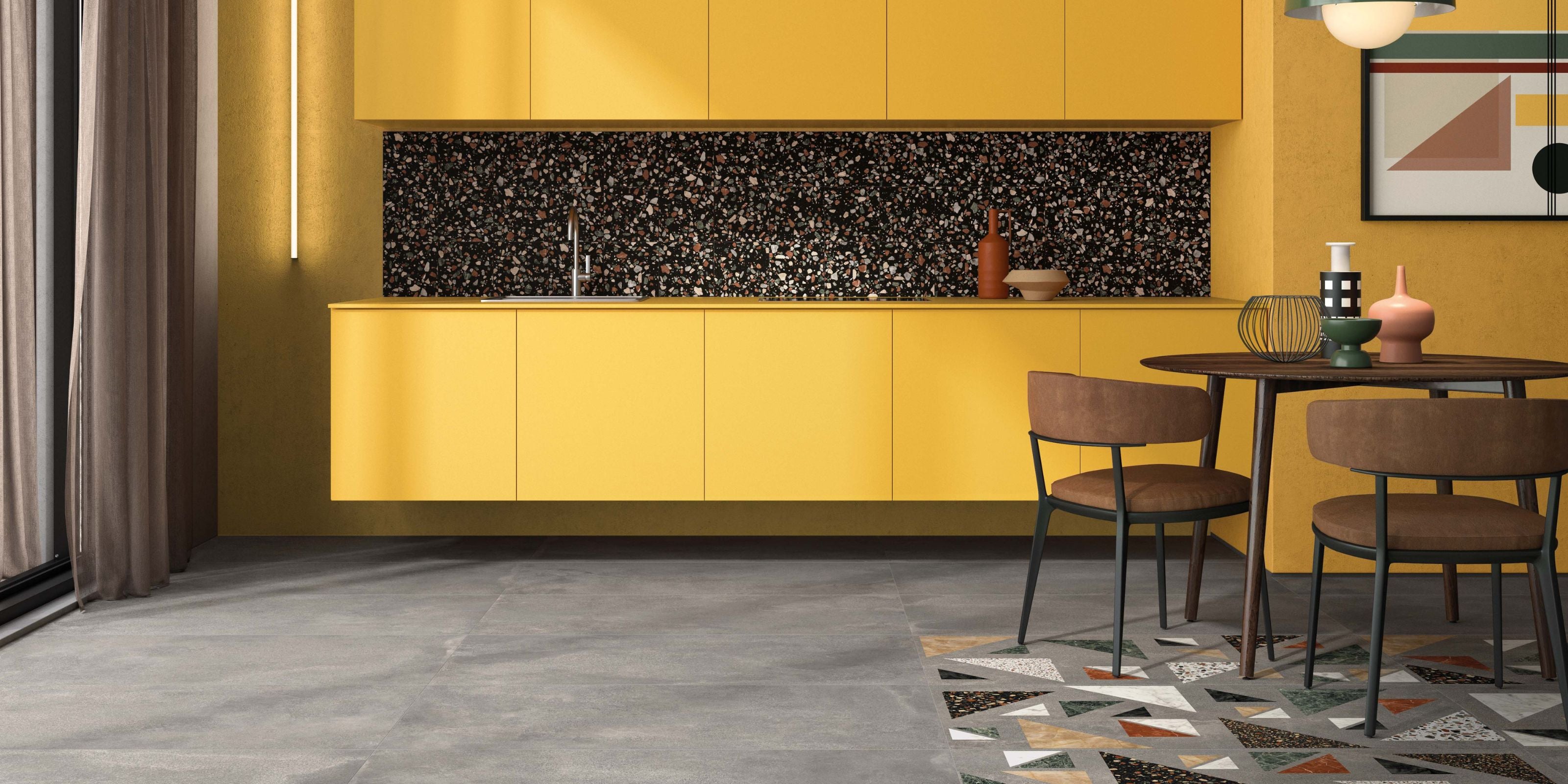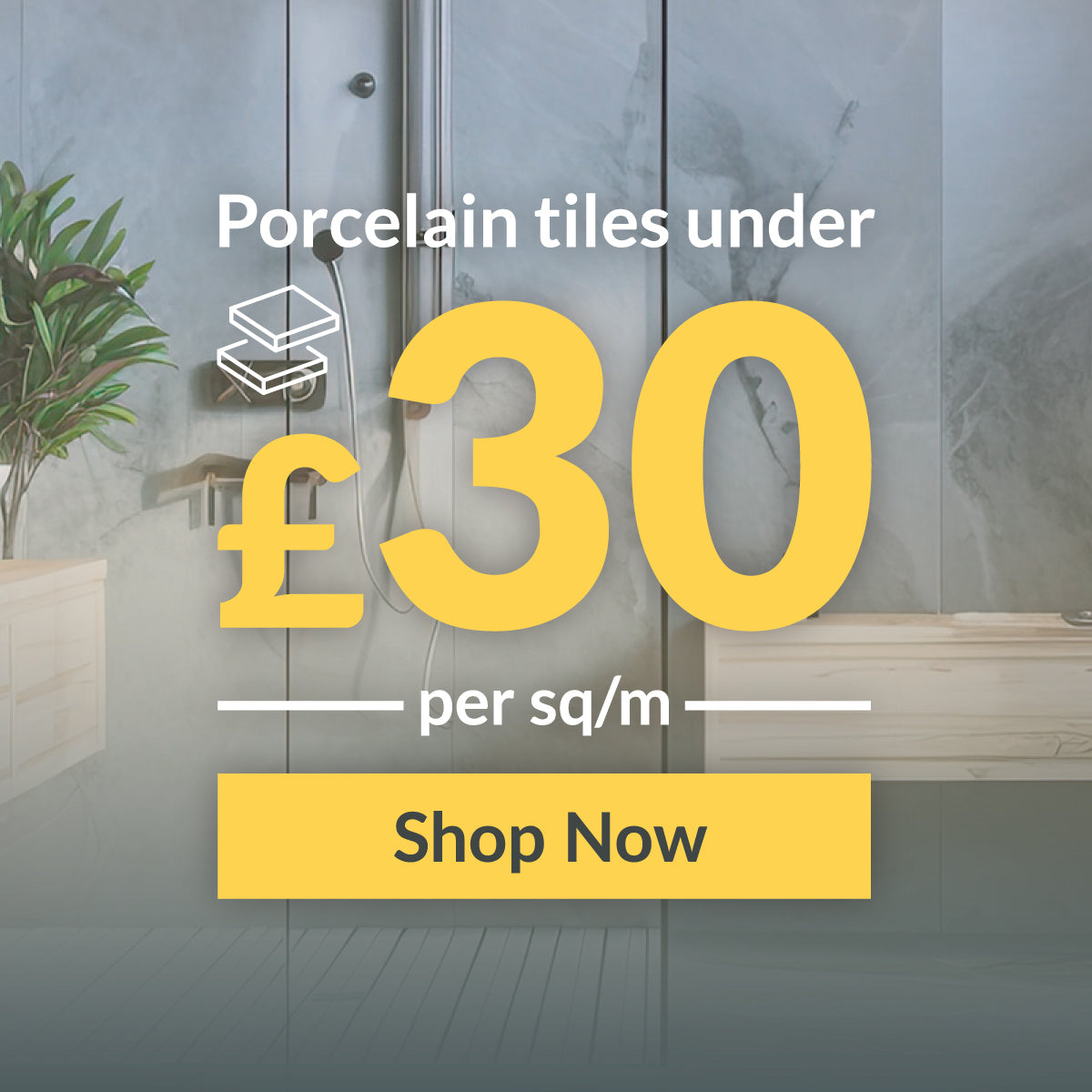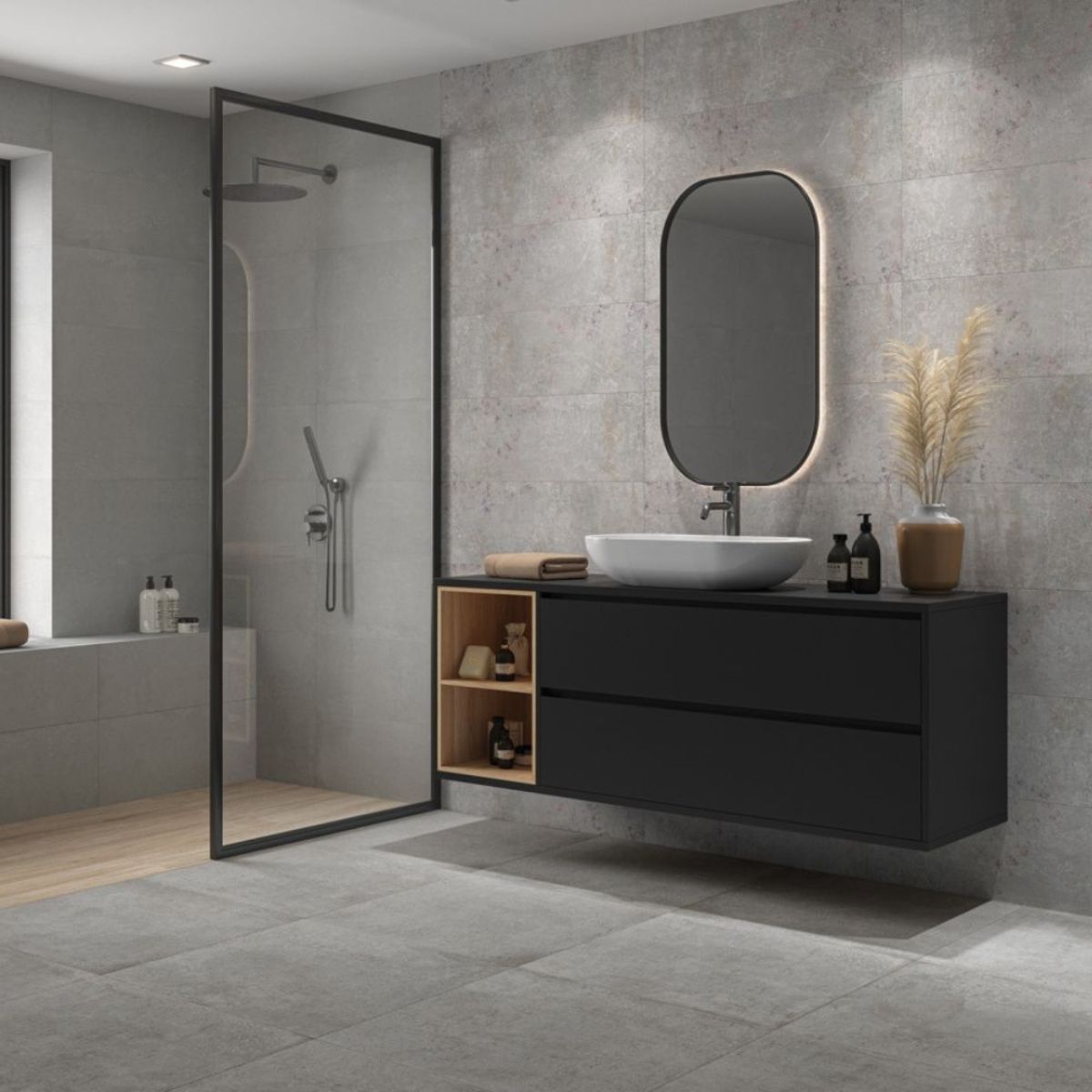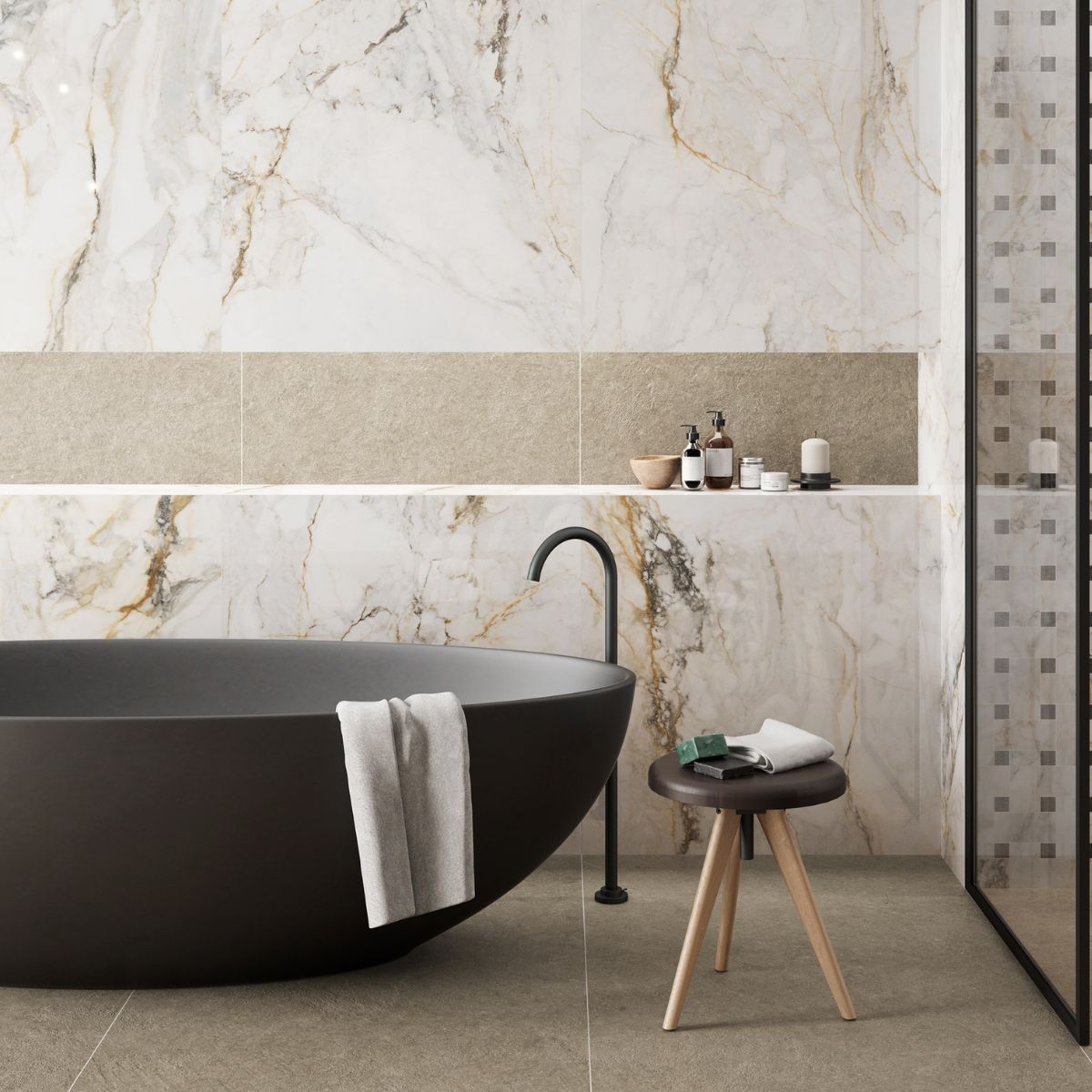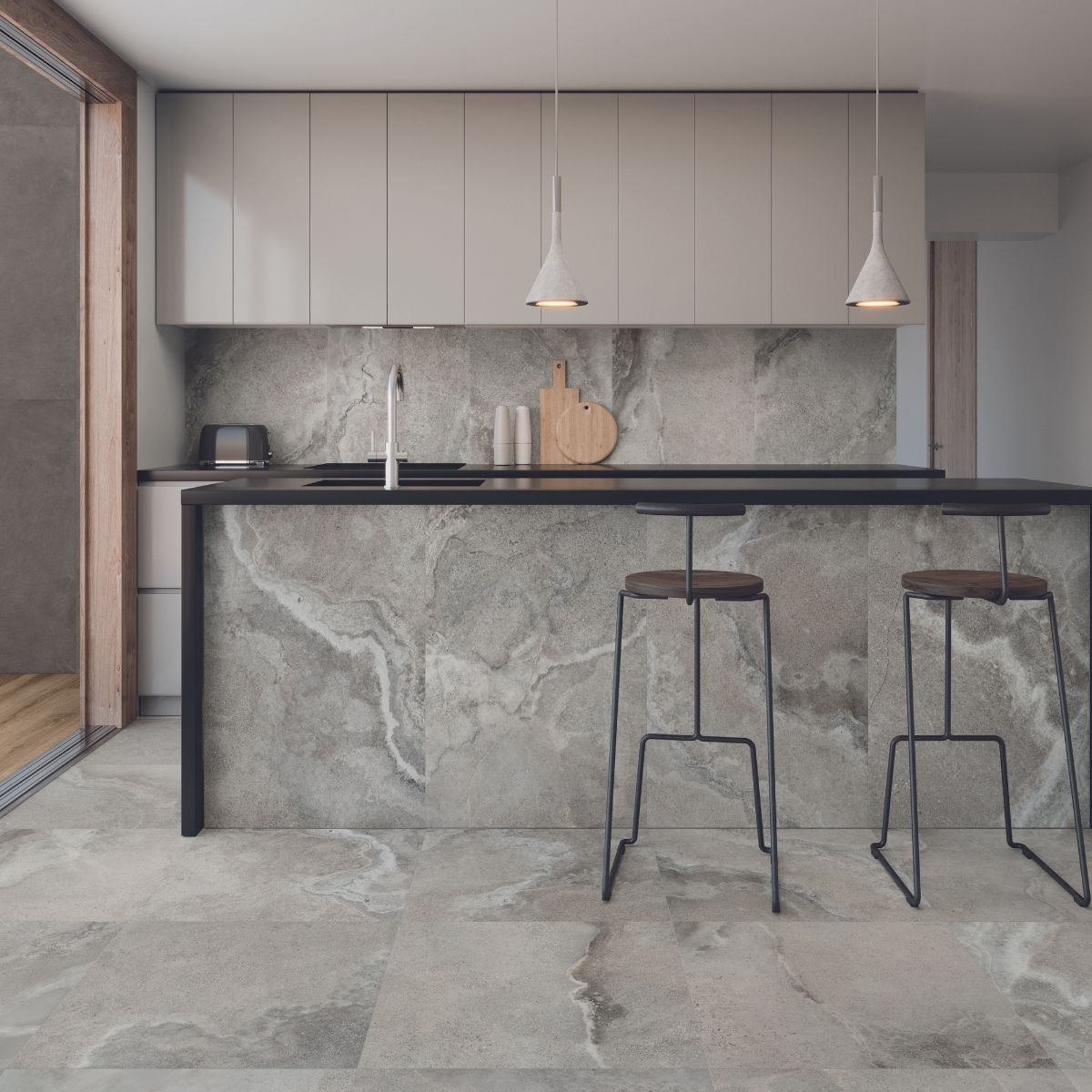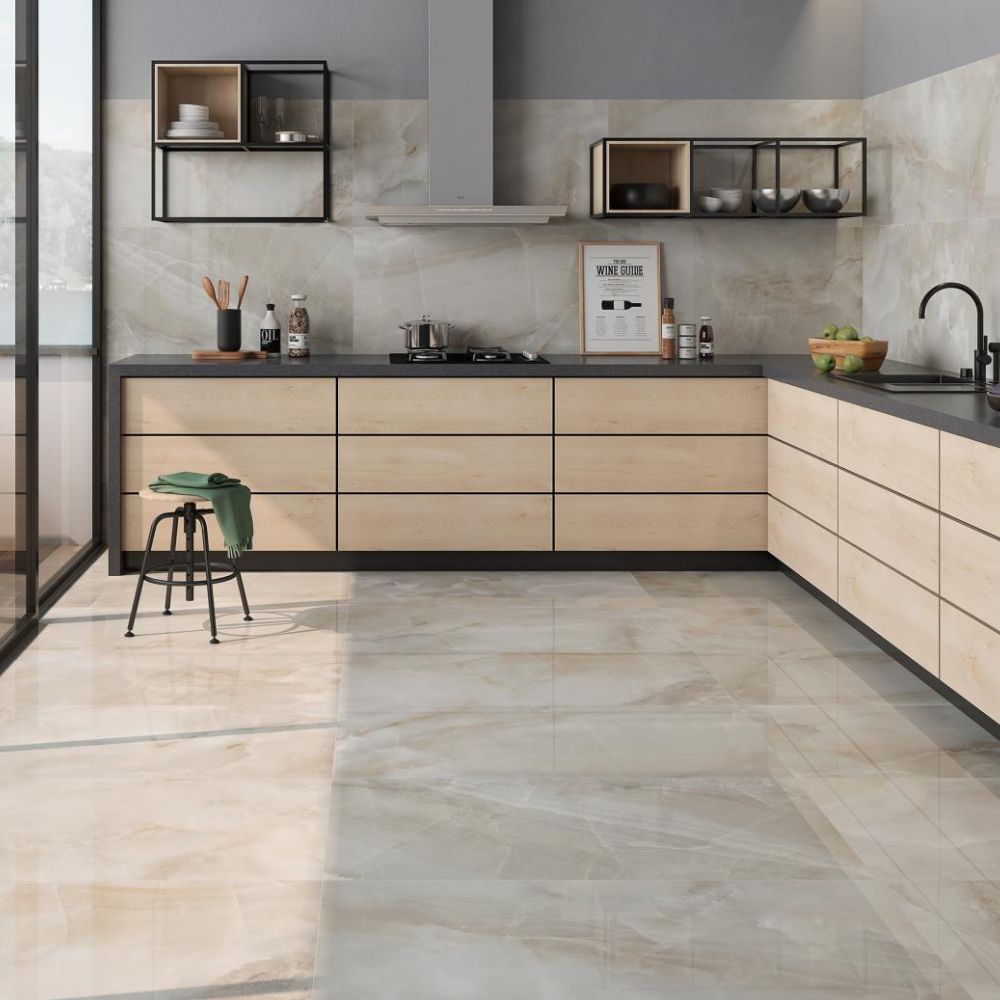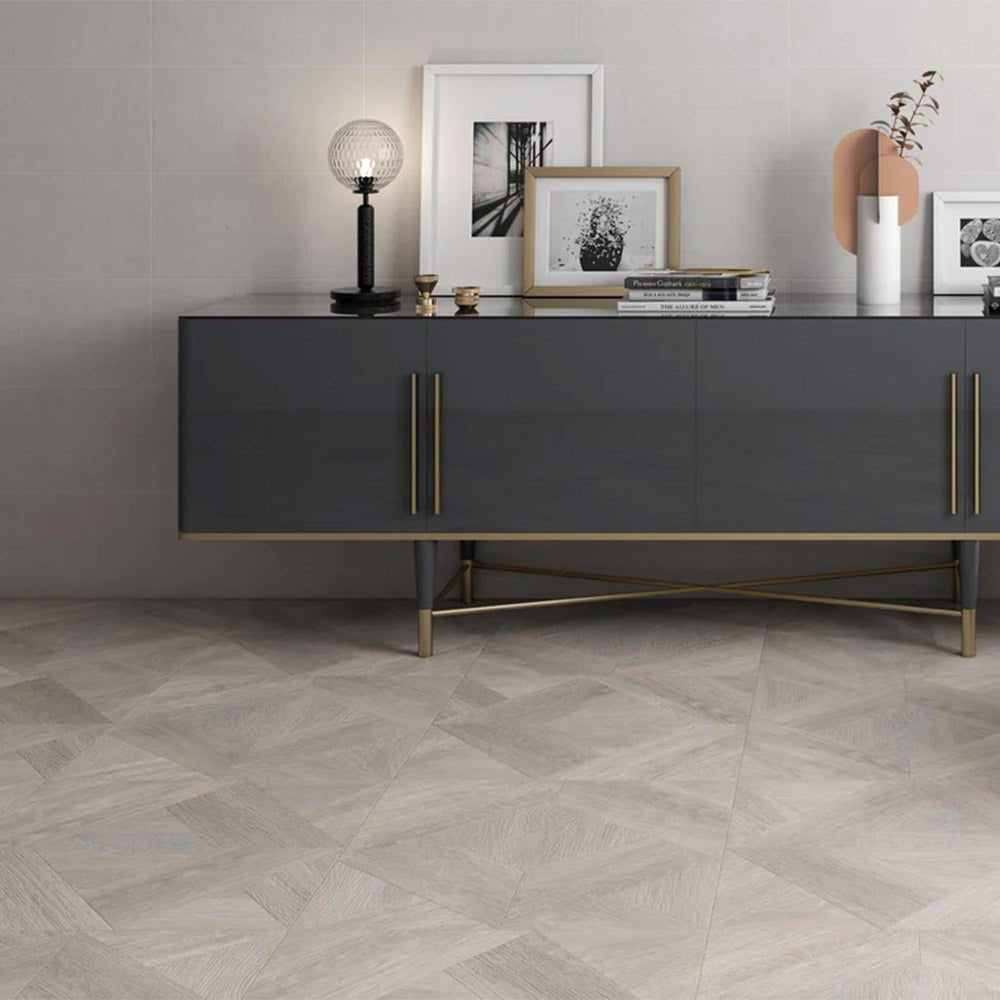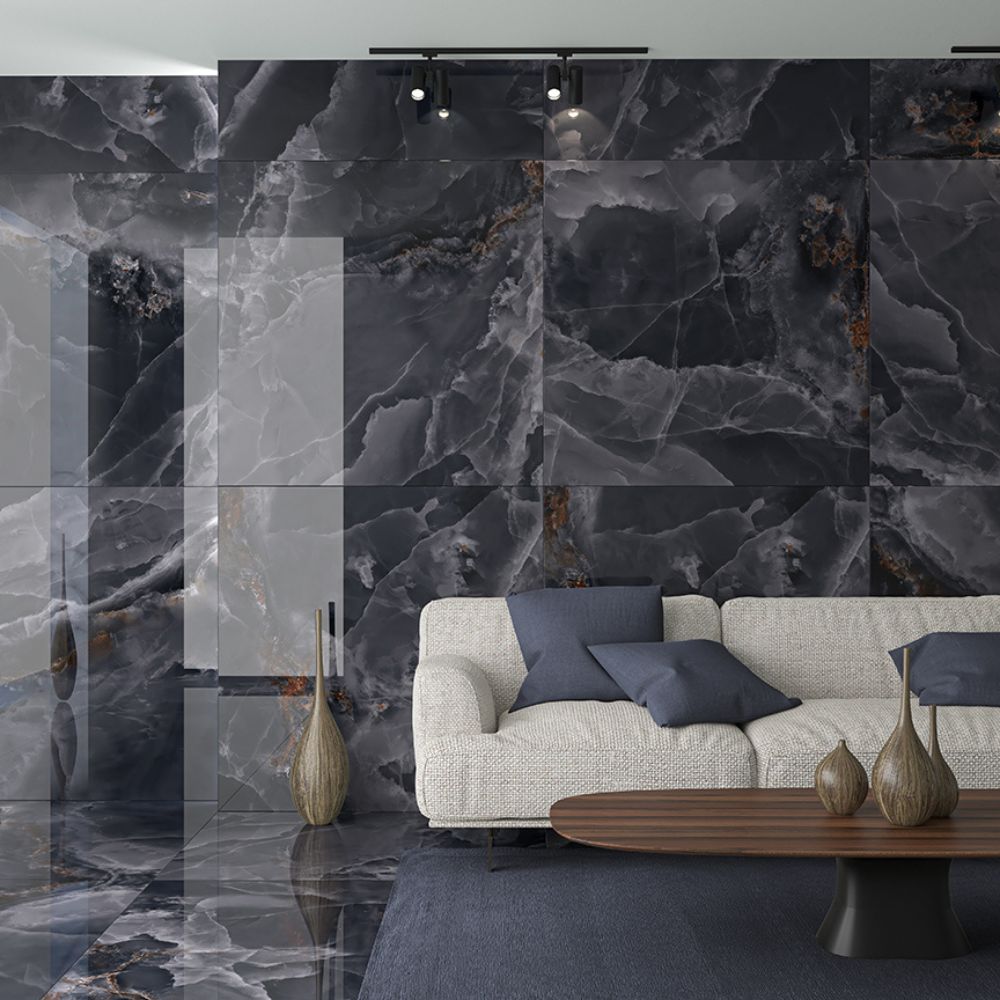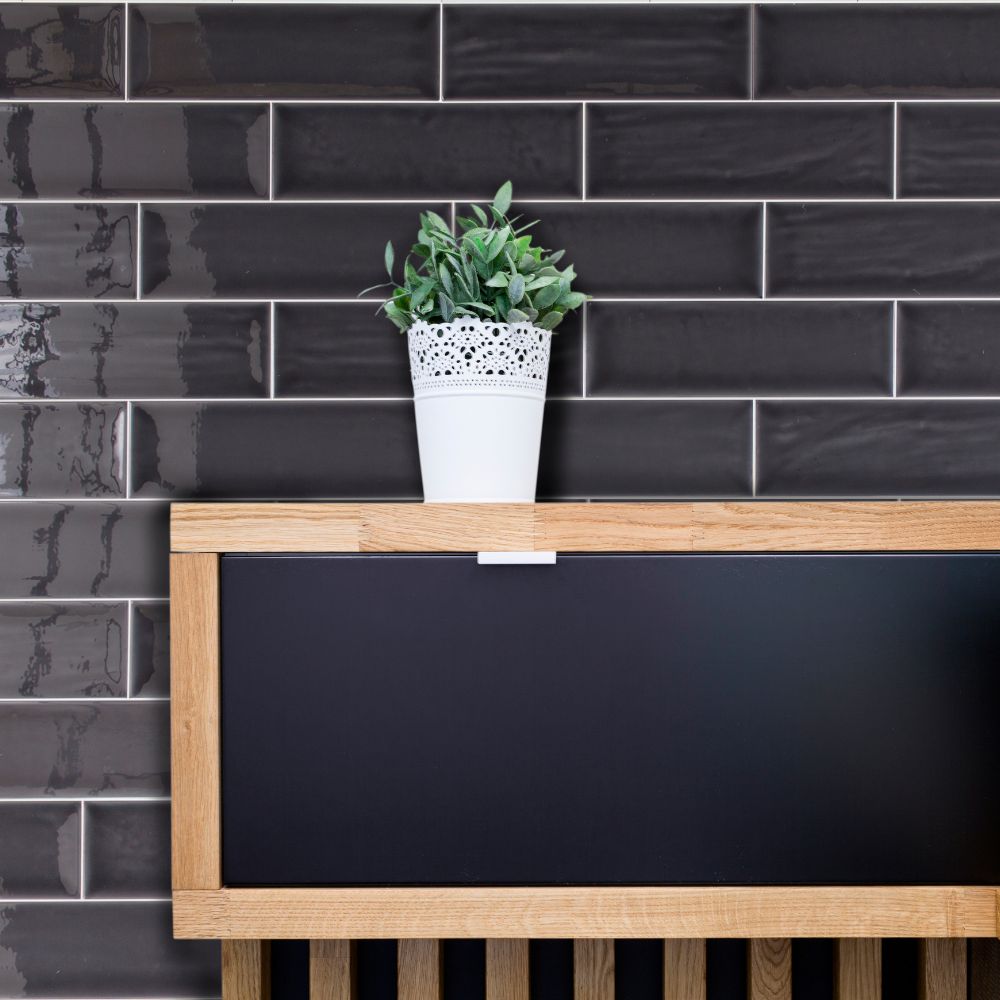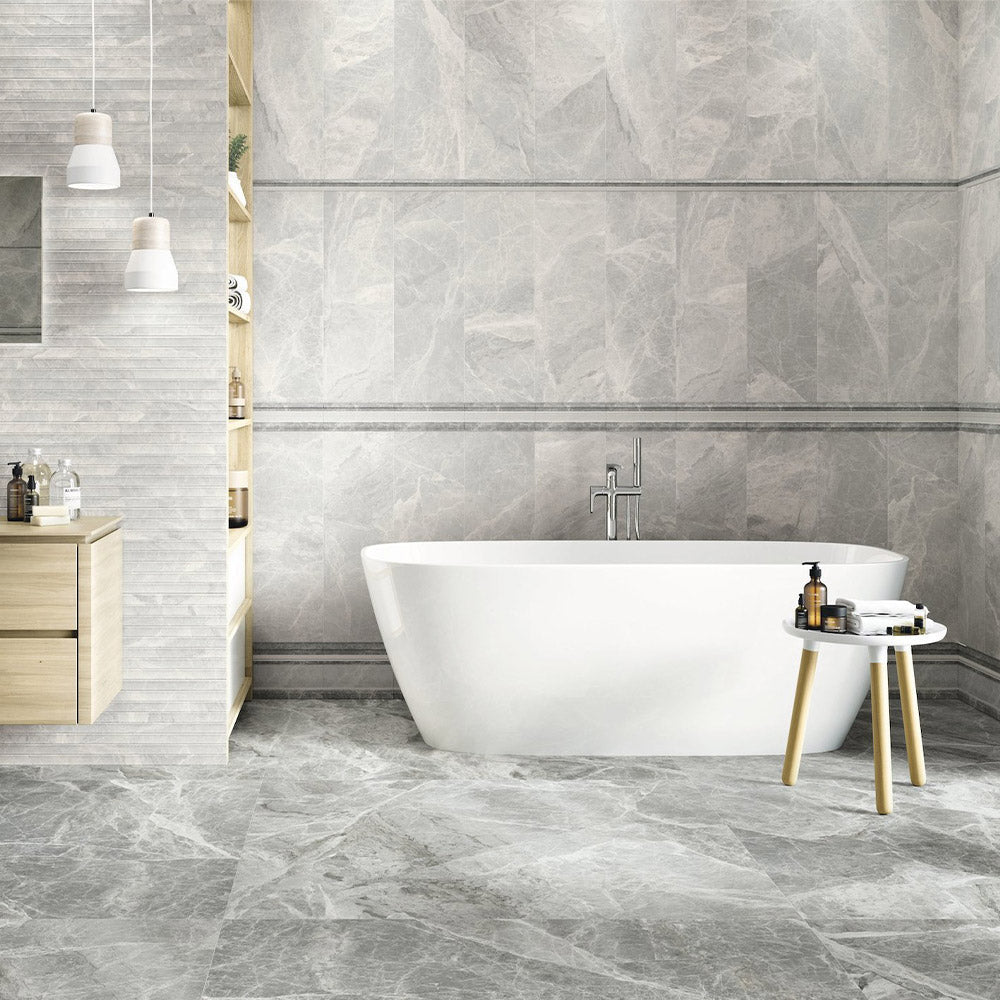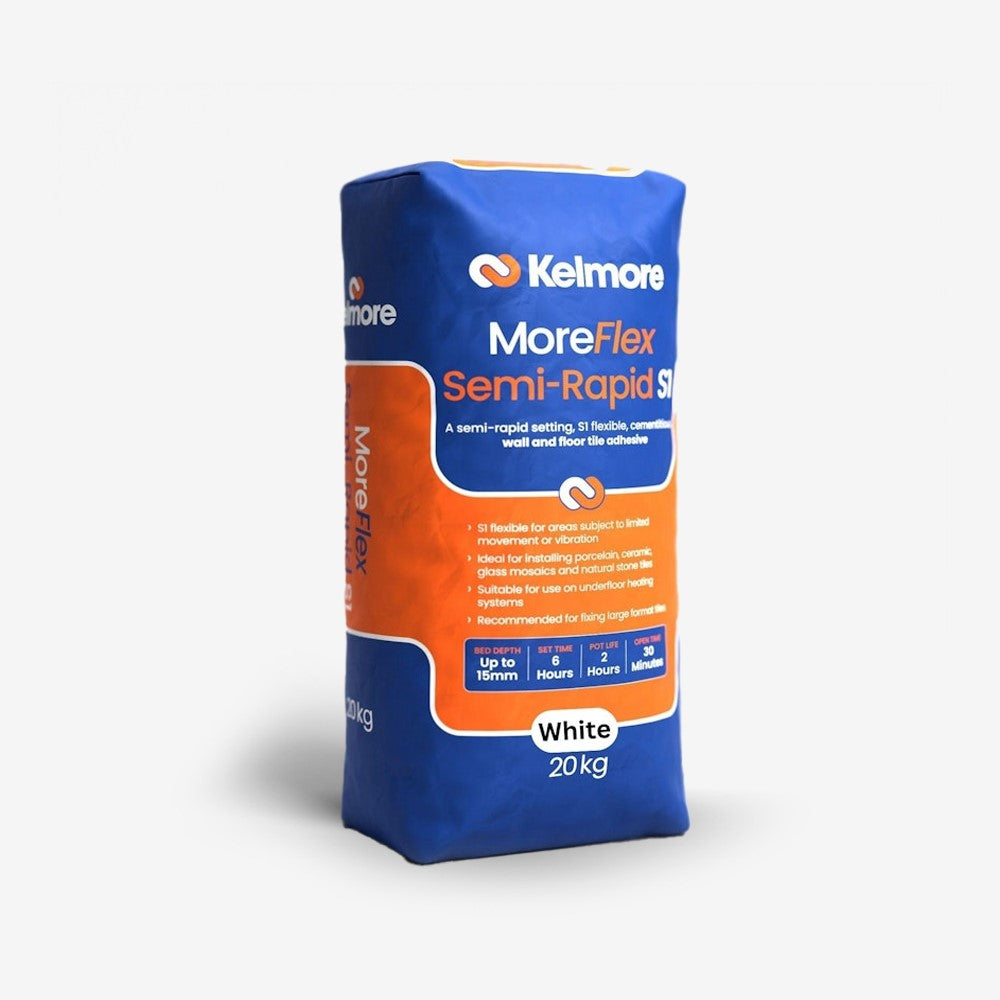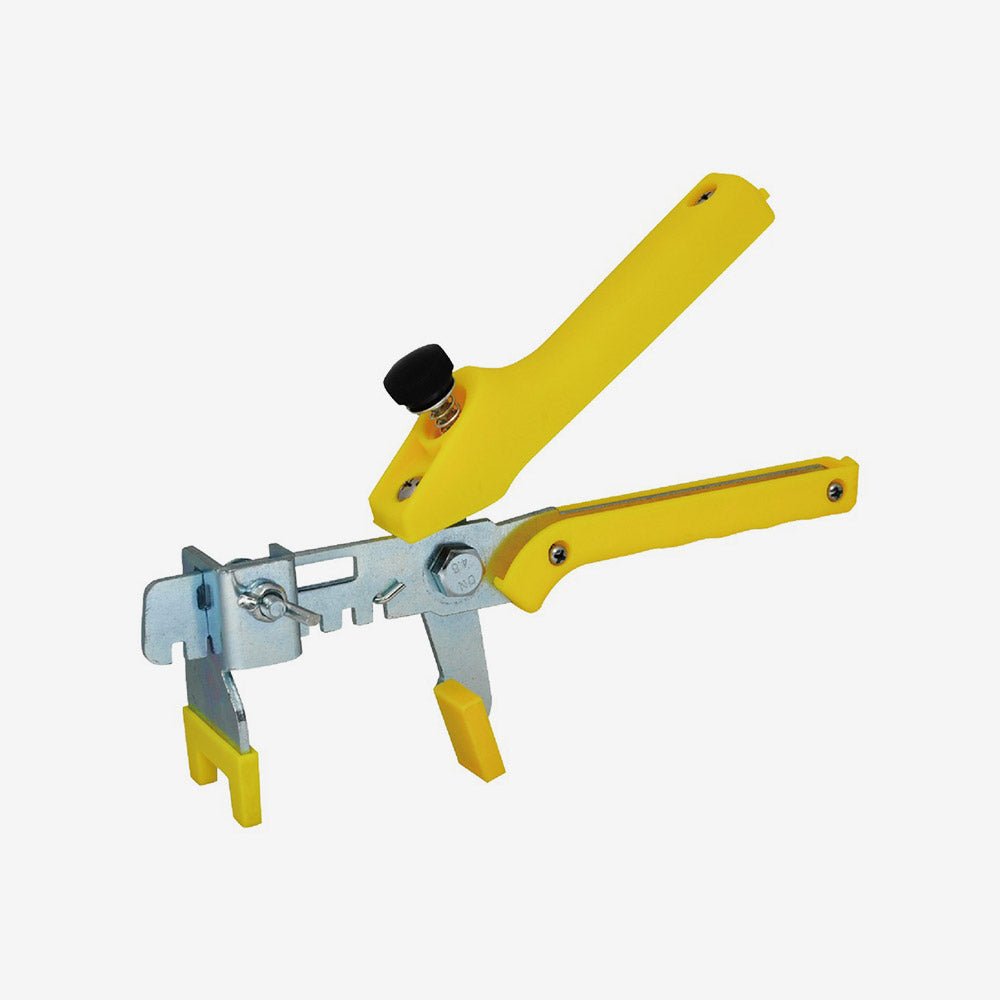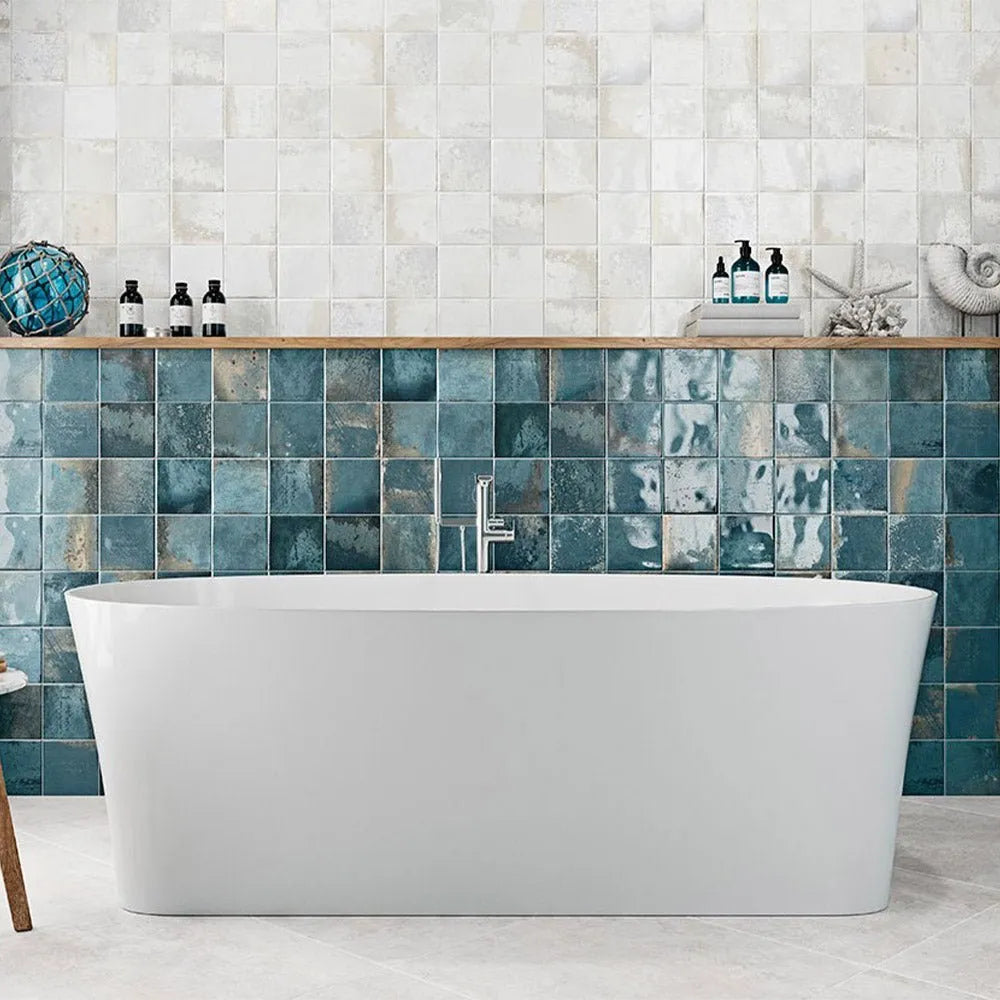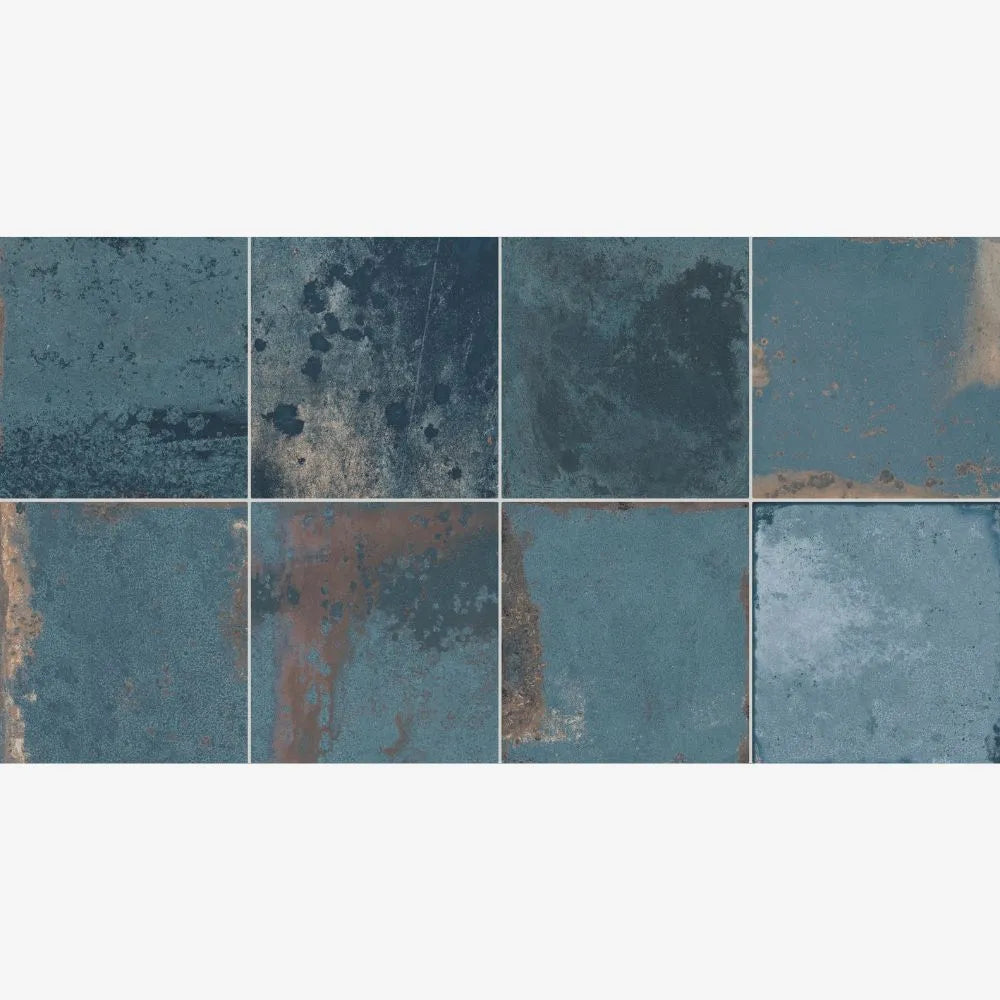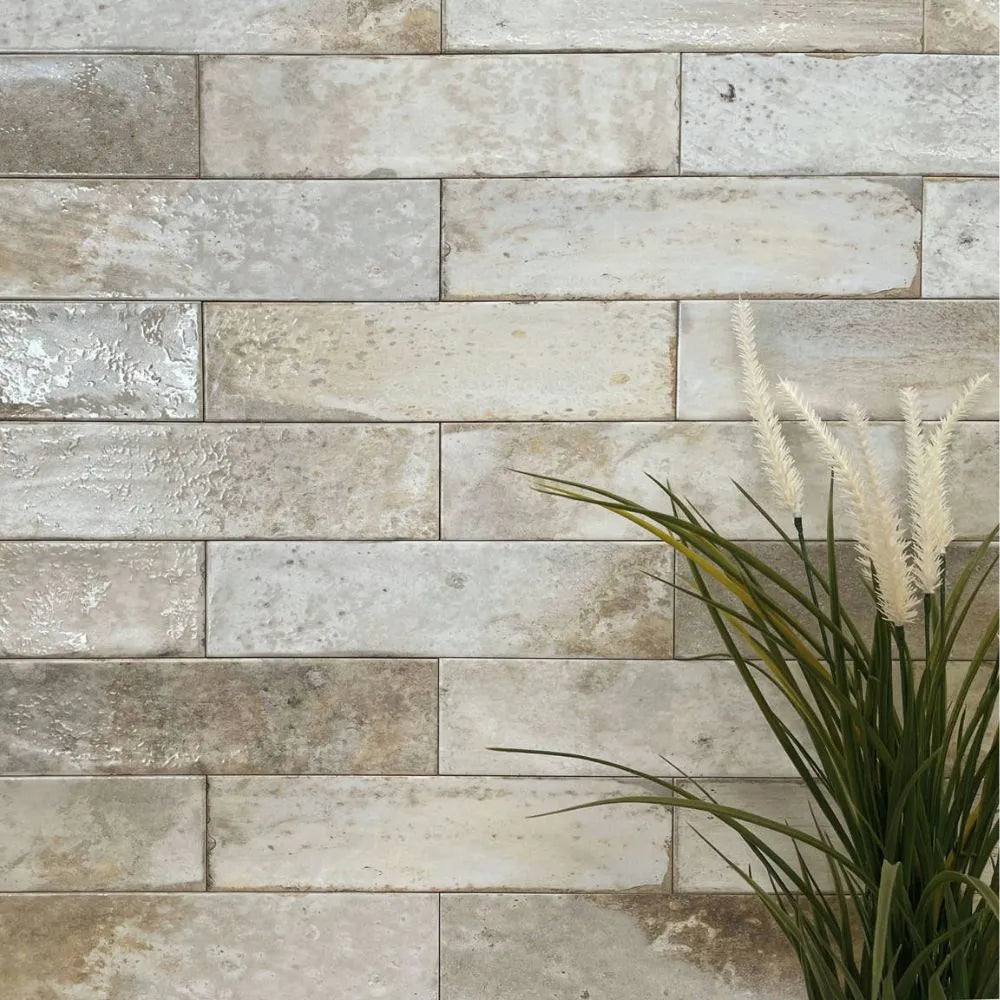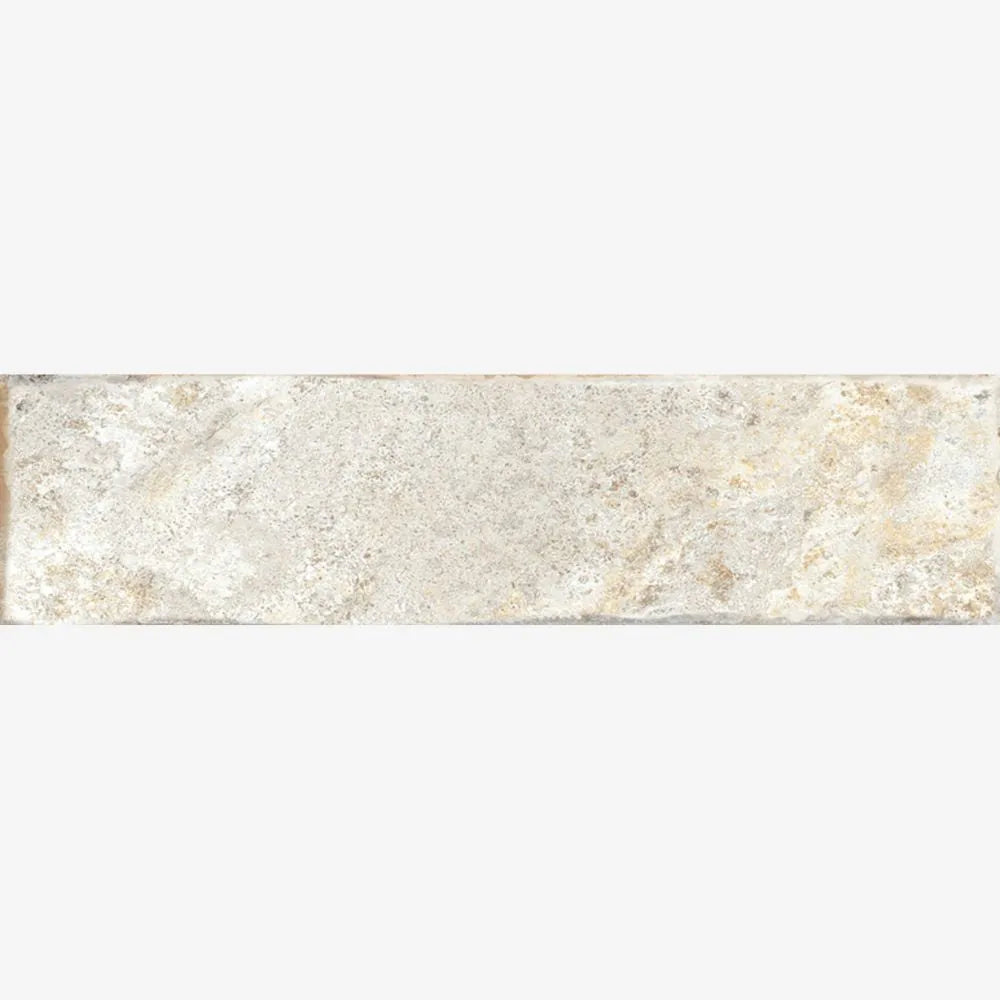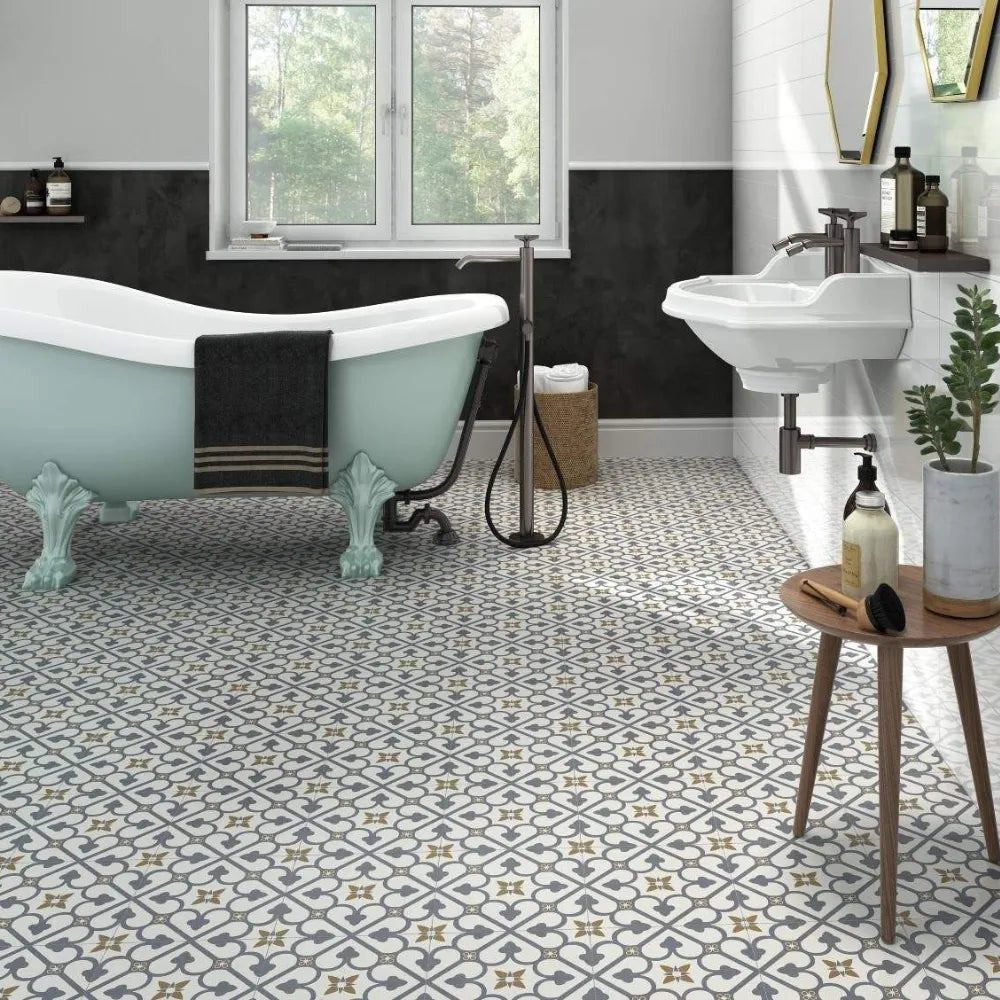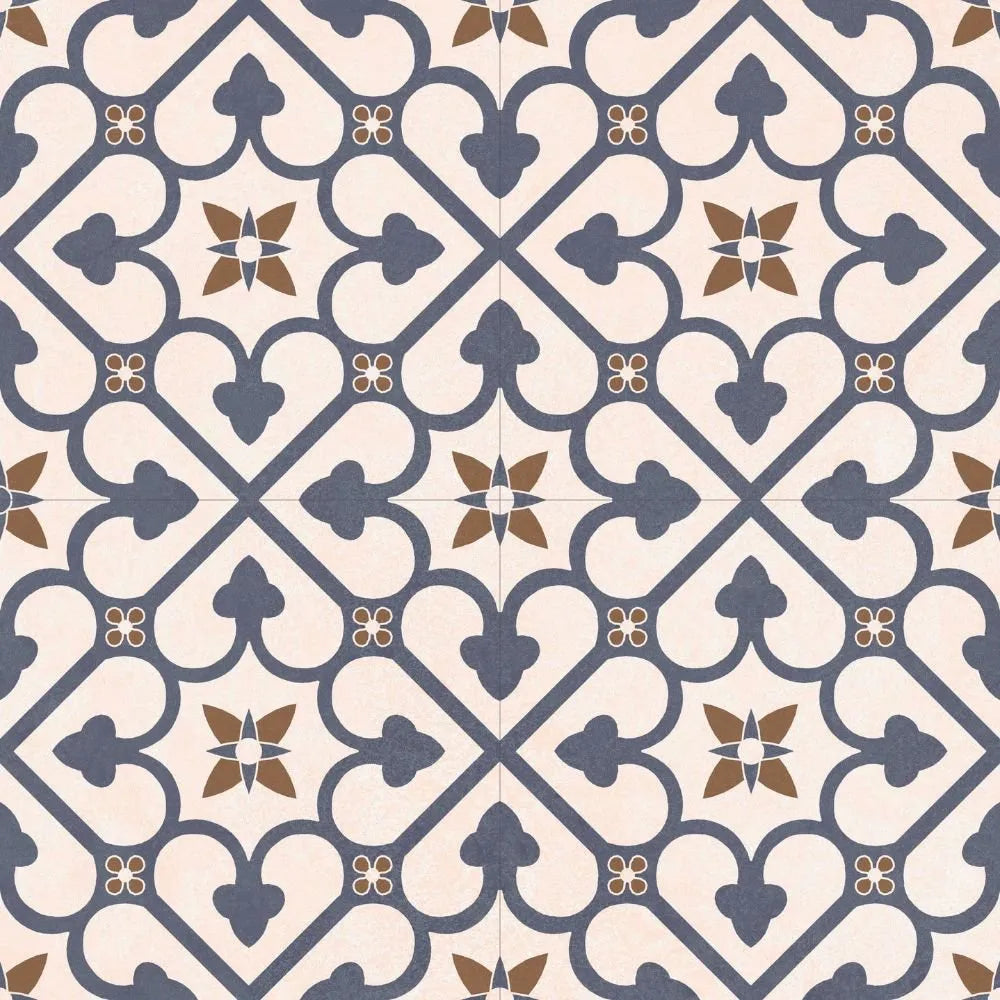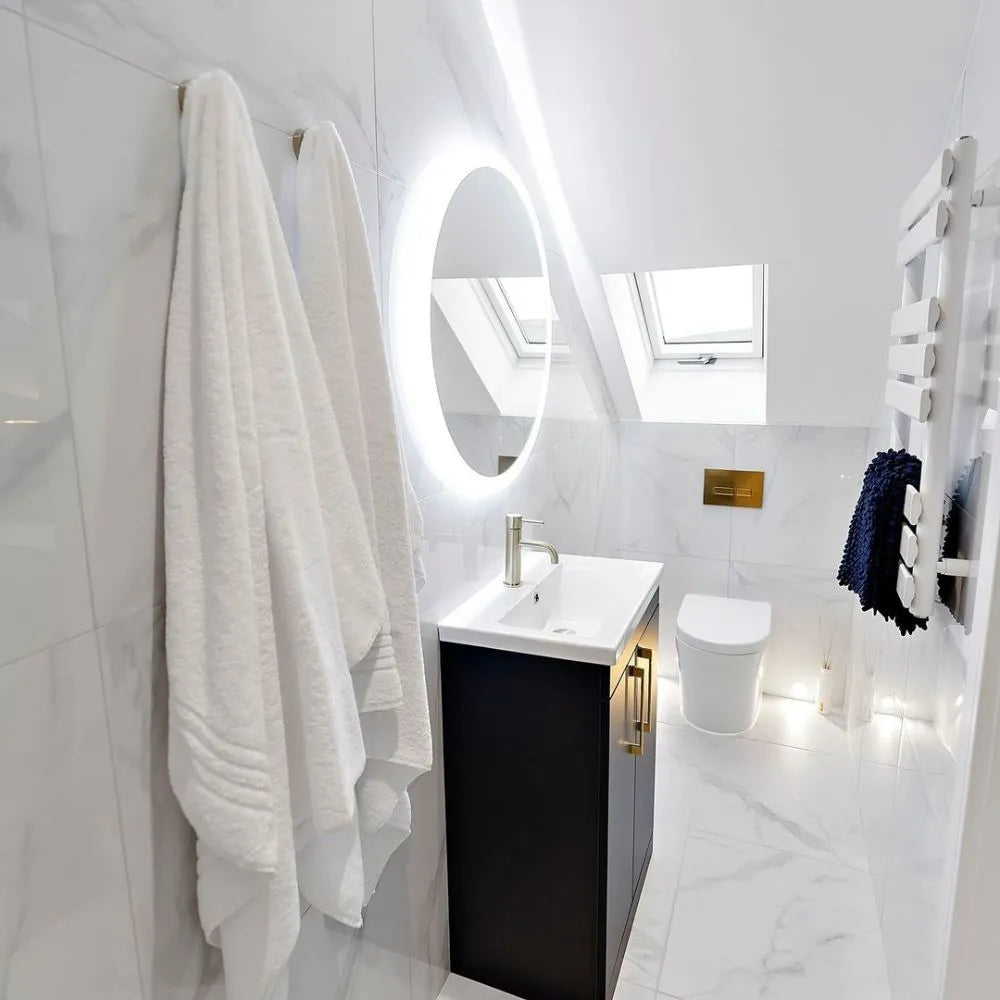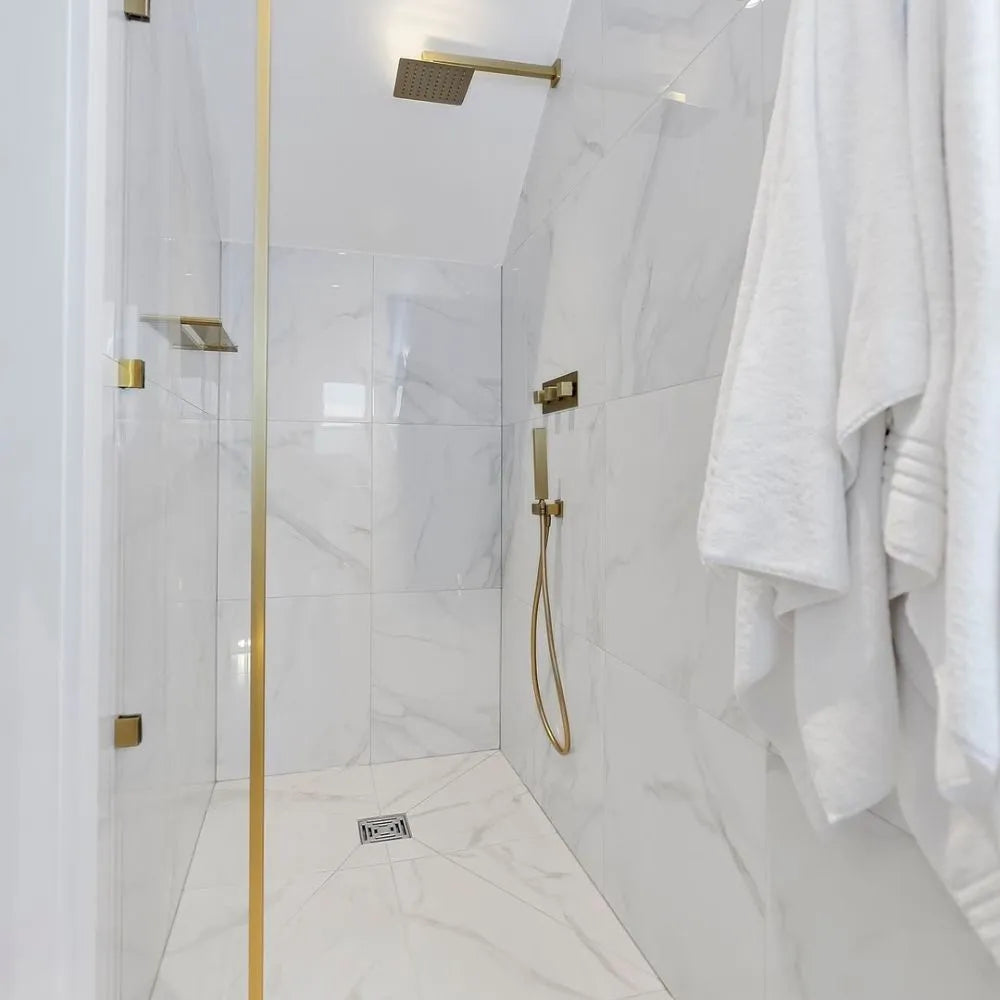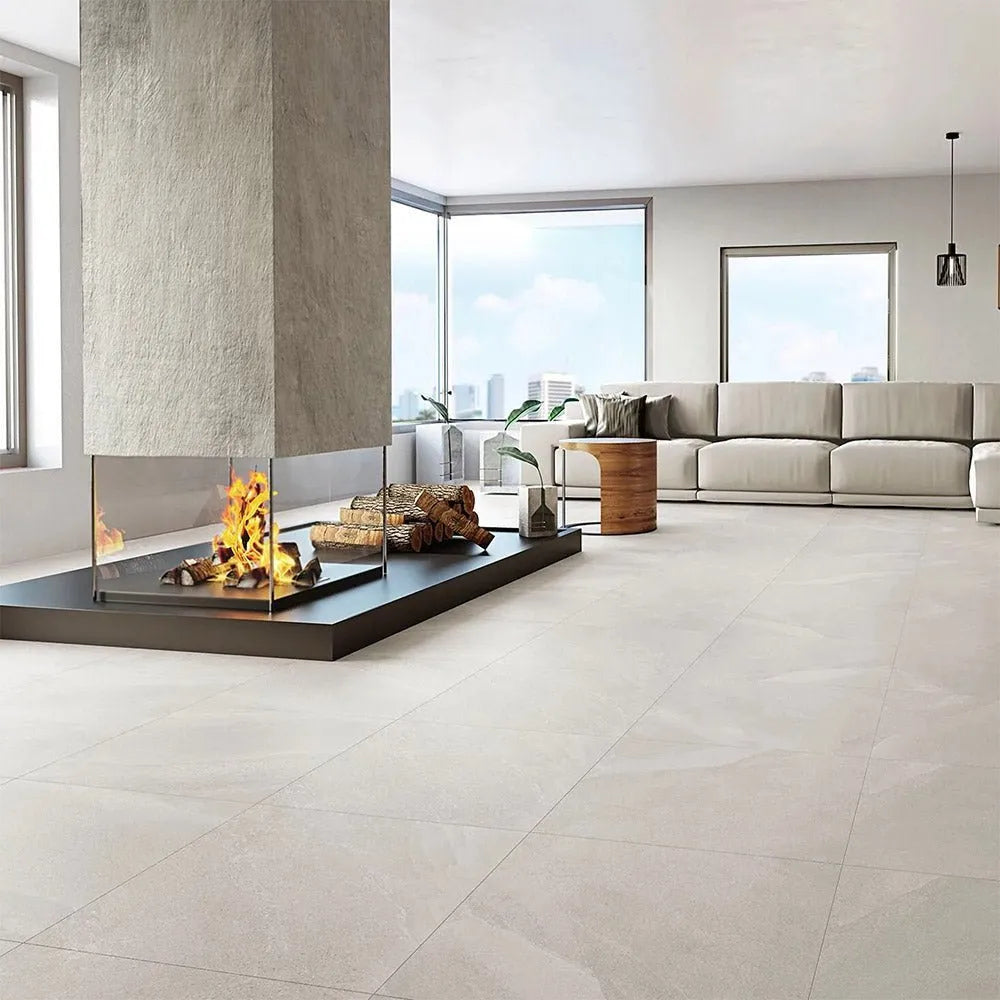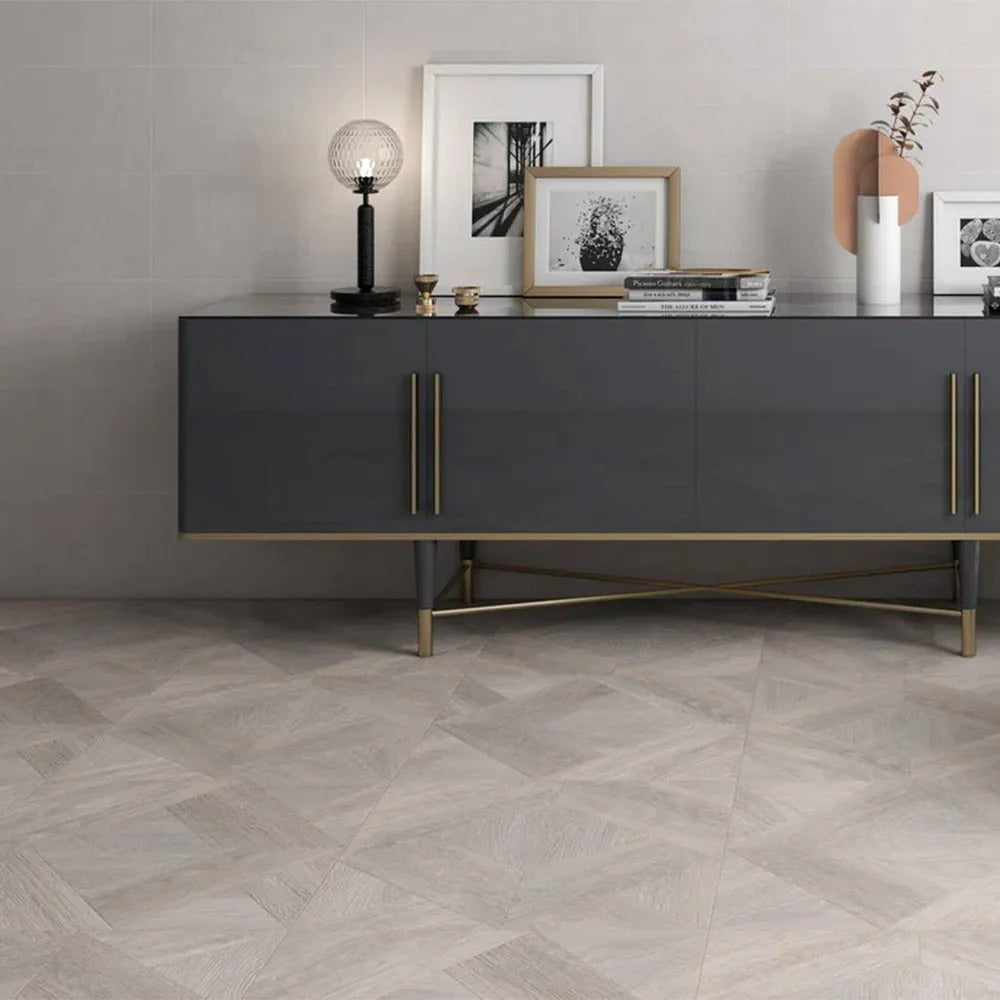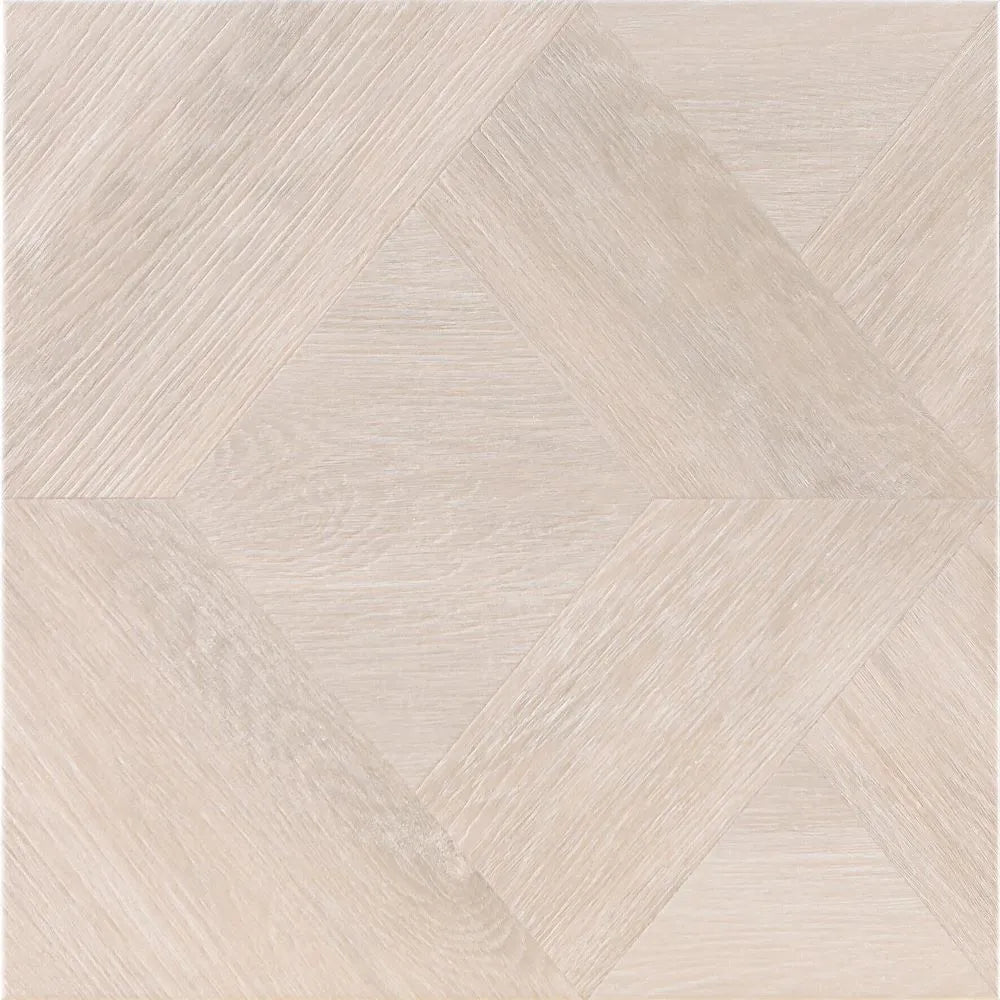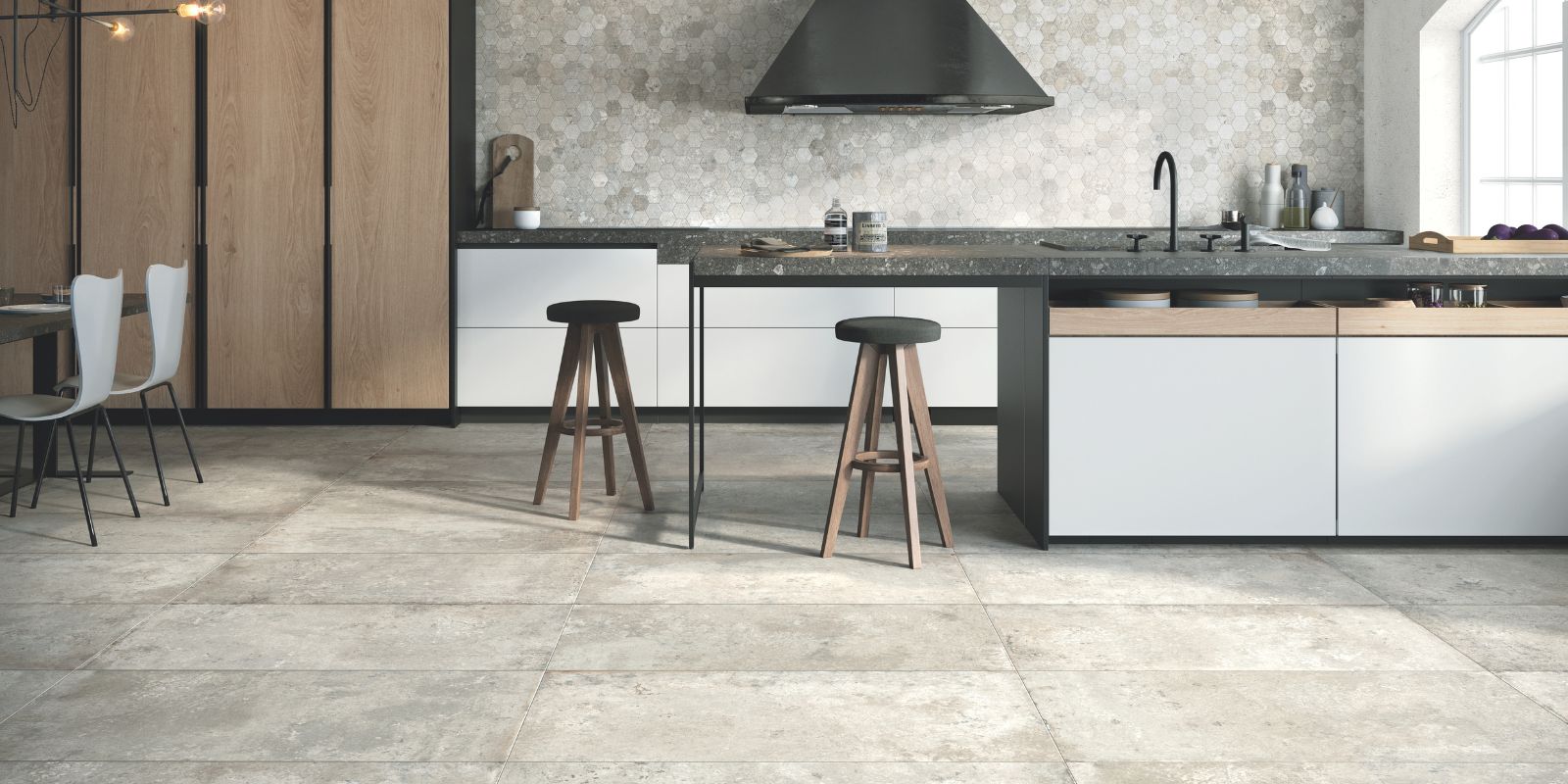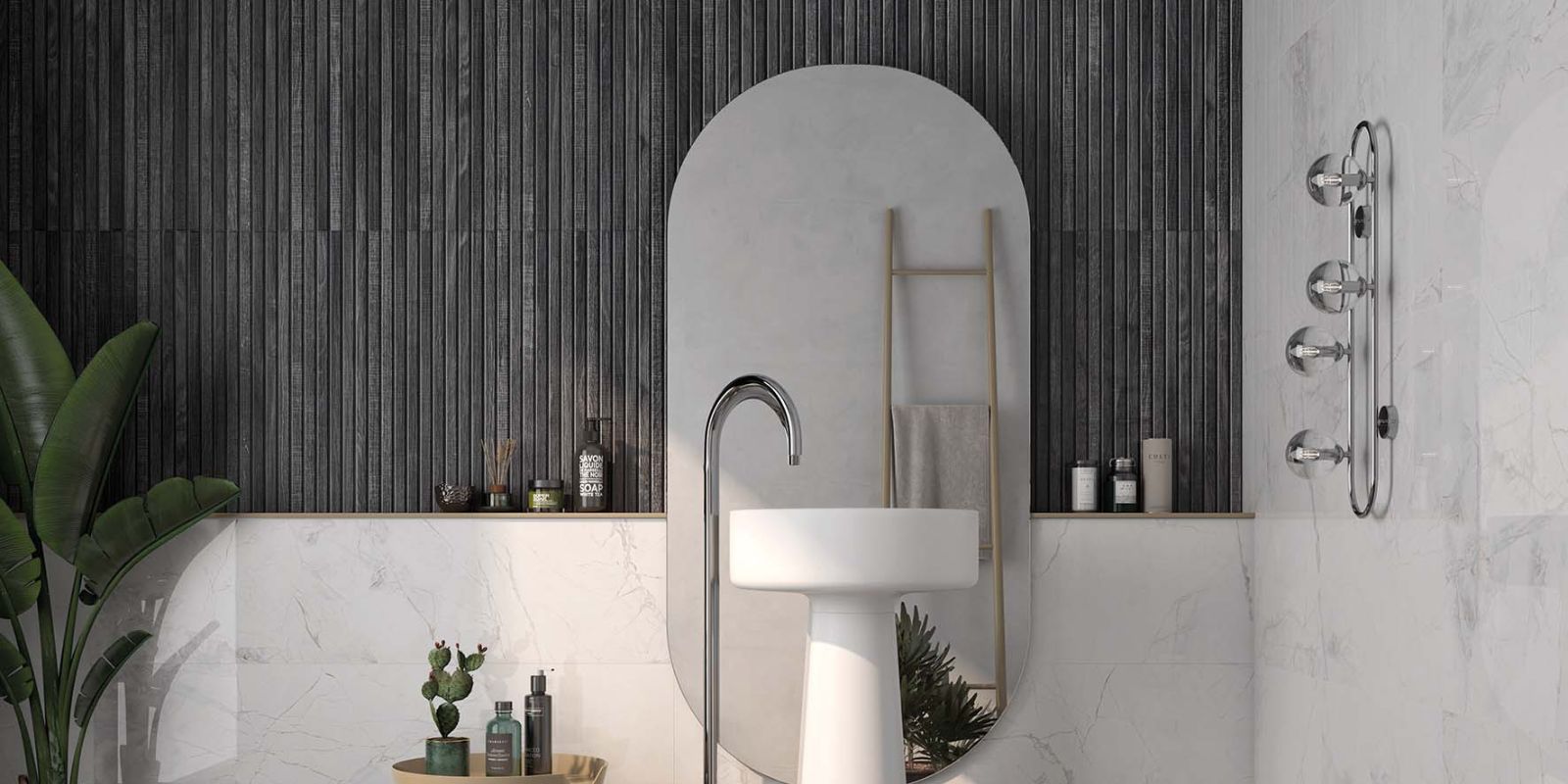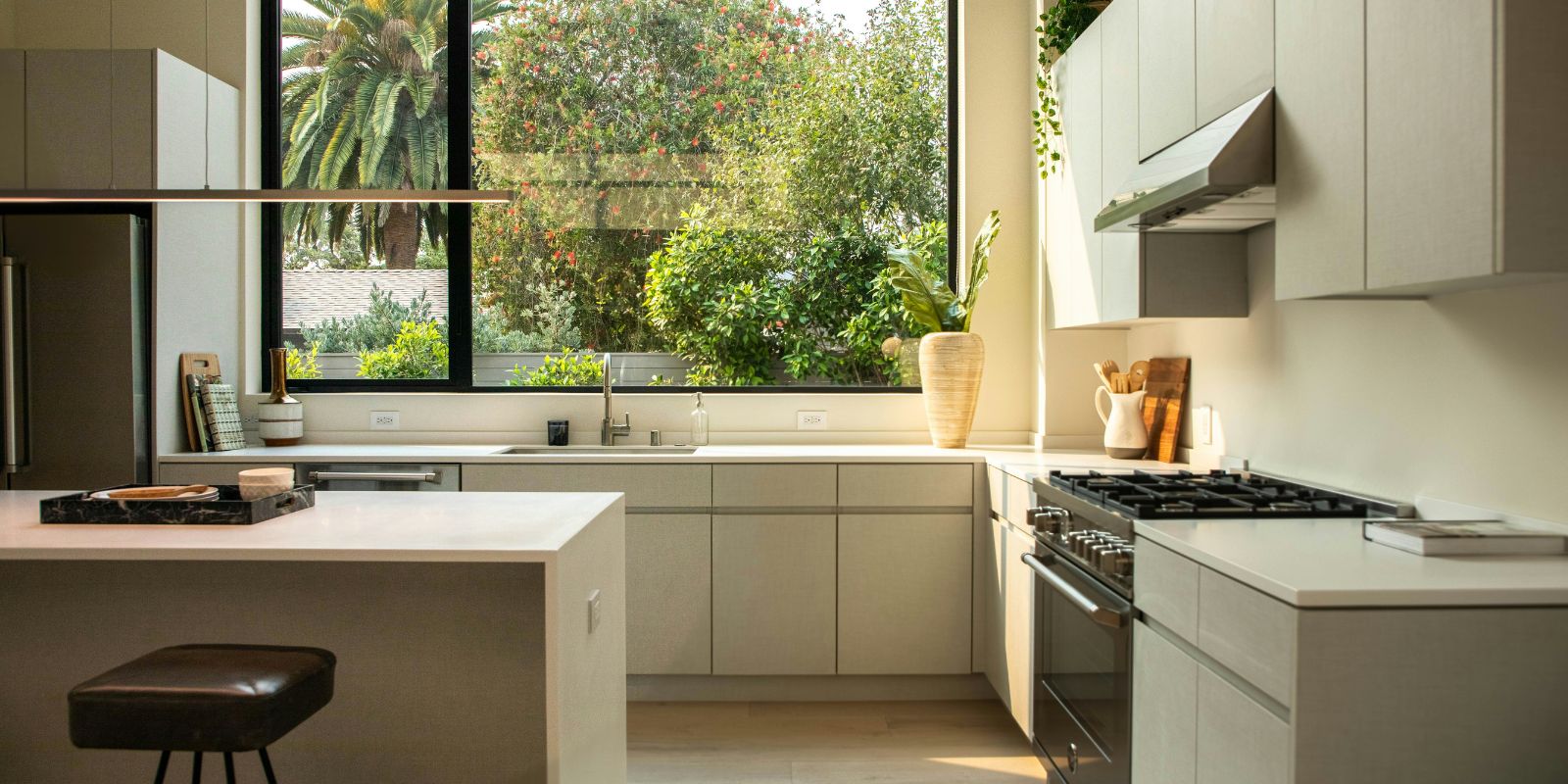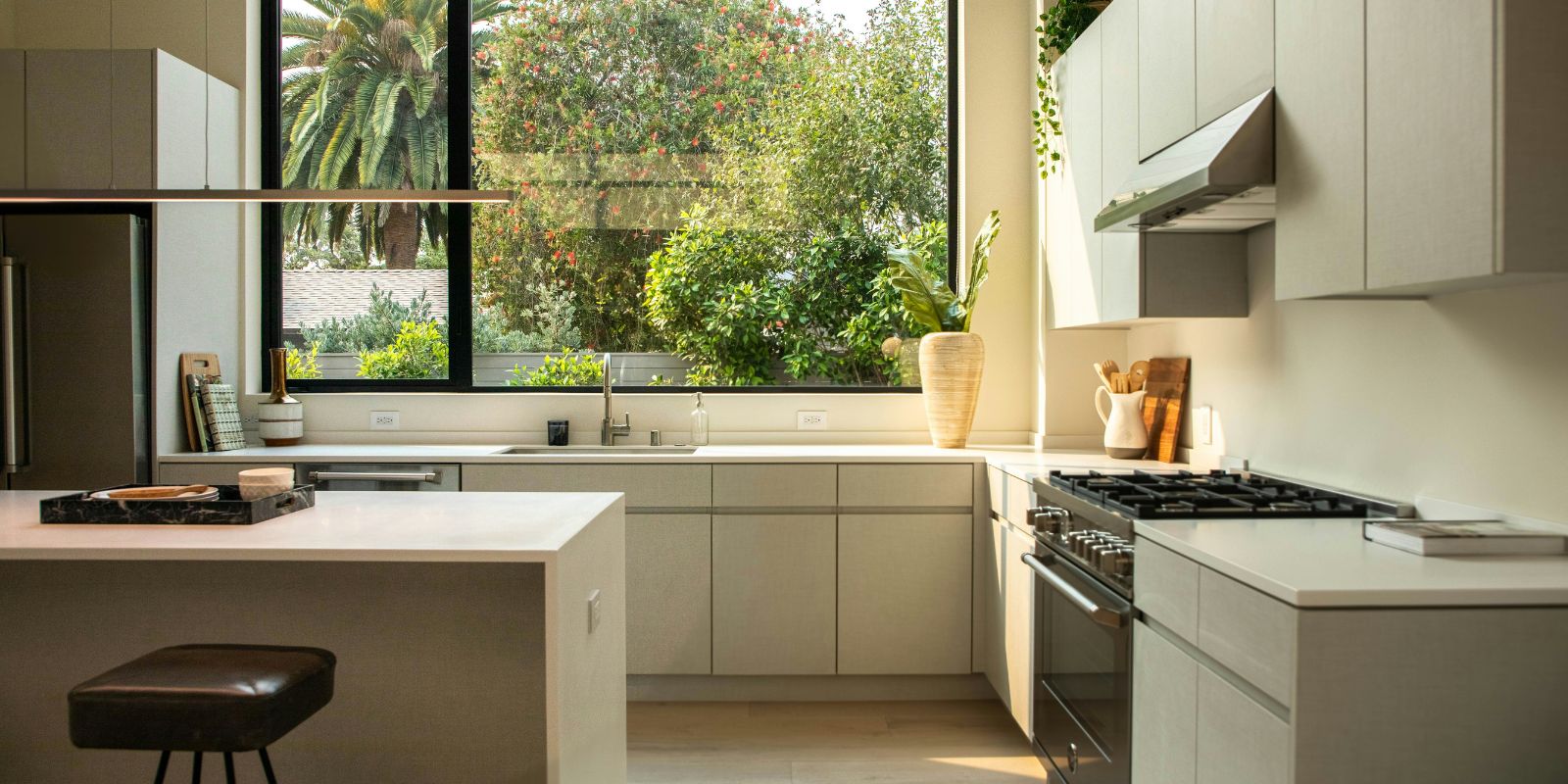
Discover the Perfect Kitchen Style For You: Your Guide to Transforming Your Space
Overview
Your kitchen style serves as the heart of your home’s design identity, seamlessly blending functionality with aesthetic appeal to create a space that truly reflects your personality and meets your daily needs. Whether you’re planning a complete kitchen renovation or simply seeking inspiration for style updates, understanding the fundamental principles of kitchen design will help you make informed decisions that enhance both your cooking experience and home value. Kitchen design doesn’t have to be boring—adding colour, unique finishes, or stylish elements can transform your space into something lively and engaging.
The perfect kitchen style goes beyond mere visual appeal—it encompasses everything from cabinet construction and colour psychology to lighting design and material selection. Modern homeowners increasingly recognize that their kitchen walls, flooring, and overall design choices significantly impact both daily functionality and long-term satisfaction with their culinary space.
This comprehensive guide will explore the most popular kitchen styles, essential design elements, and practical implementation strategies to help you create a kitchen that serves as both a functional workspace and a stylish focal point of your home. As you explore these options, you’ll find inspiration to help you find your ideal kitchen style or design. From contemporary minimalism to traditional warmth, we’ll discover how to choose and implement the perfect kitchen style for your unique needs and preferences.
Understanding Different Kitchen Styles
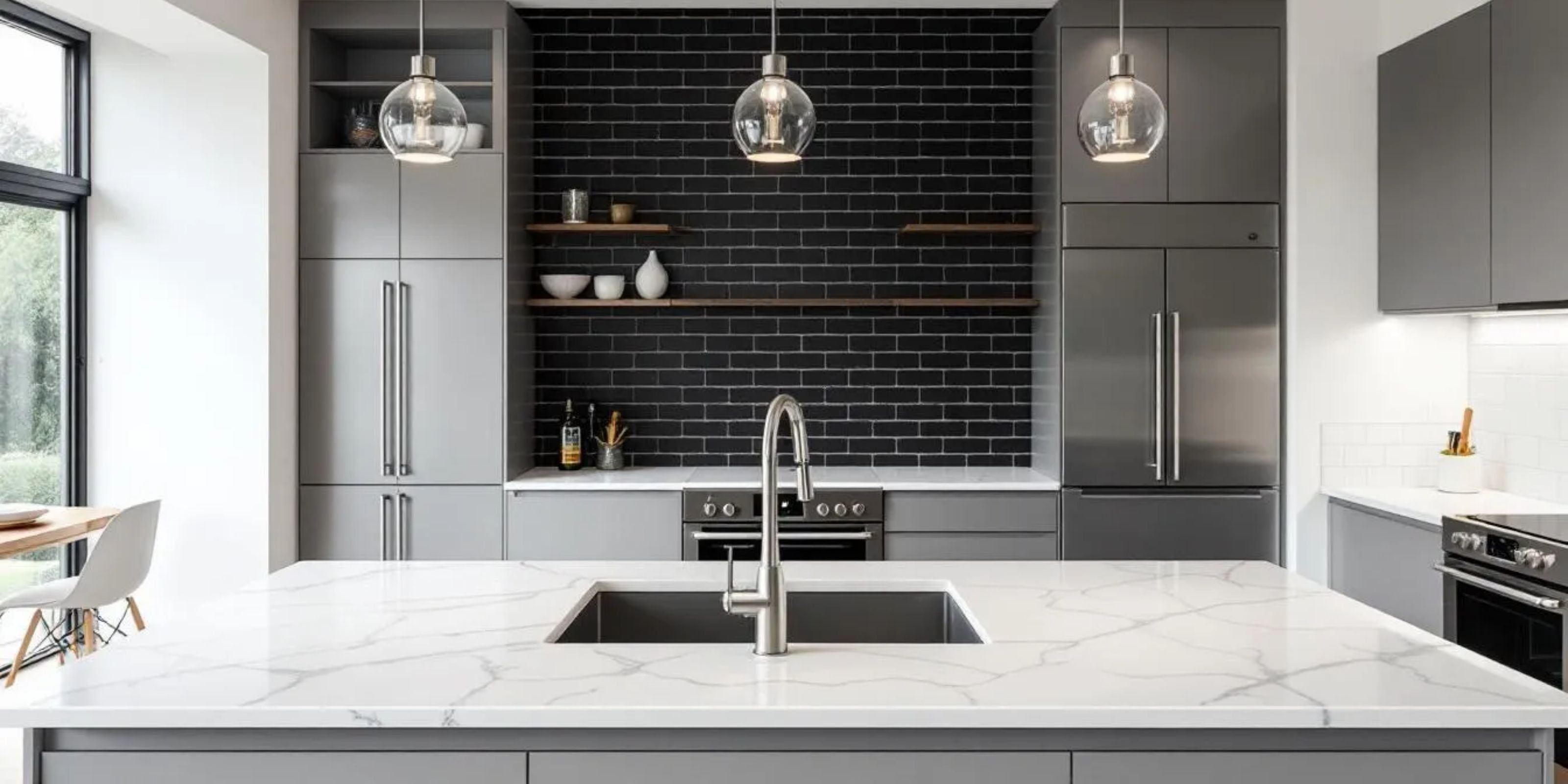
Kitchen design has evolved dramatically from purely functional spaces to sophisticated design focal points that serve as the heart of modern homes. Today’s kitchen styles reflect a careful balance between aesthetic appeal and practical functionality, with each style offering unique characteristics that cater to different lifestyle preferences and architectural contexts.
The relationship between kitchen style and home value cannot be overstated. According to industry research, well-designed kitchens can significantly enhance property values, with transitional and farmhouse styles representing over 40% of kitchen renovation projects in North America. This popularity stems from their broad appeal and timeless characteristics that resist quick obsolescence.
When selecting a kitchen style, several factors influence the decision-making process. Personal preference plays a key role, as the wide variety of modern kitchen styles allows you to choose features that best match your individual tastes. Your home’s existing architecture and interior design choices in other rooms provides important context clues—a Victorian home might naturally accommodate traditional or cottage styles, while a modern residence could perfectly suit contemporary or industrial designs. Personal taste preferences, cooking habits, entertaining frequency, and family size all play crucial roles in determining which style will best serve your needs. There are many things to consider when selecting a kitchen style, such as layout, materials, and color, to ensure the final design fits your lifestyle.
The most successful kitchen designs achieve harmony between form and function, ensuring that aesthetic choices support rather than hinder daily activities. Whether you opt for sleek contemporary lines or warm traditional details, your chosen style should enhance your cooking experience while creating a welcoming atmosphere for family gatherings and social entertaining.
Modern Contemporary Kitchen Designs
Contemporary kitchen style represents the cutting edge of modern design, emphasizing clean lines, minimalist aesthetics, and seamless integration of technology. It emphasizes sleek, uncluttered surfaces, often with handleless cabinets and neutral colour palettes like whites, greys, and warm neutrals. Contemporary kitchens integrate modern technology seamlessly with built in appliances, use materials such as quartz countertops, stainless steel appliances, and glass elements, and prioritize both aesthetic appeal and functional efficiency. The style aims to create sophisticated, spacious, and organized culinary spaces that feel fresh and up-to-date, balancing visual impact with practical usability.
The foundation of contemporary style lies in its commitment to simplicity and uncluttered surfaces. Handleless cabinets in high gloss, matte, or matt finishes create streamlined appearances that eliminate visual distractions. These sleek cabinetry solutions often feature push-to-open mechanisms or integrated pulls that maintain the smooth, continuous surfaces essential to the contemporary aesthetic.
Colour schemes in contemporary kitchens typically center around neutral palettes, with whites, greys, and warm neutrals providing sophisticated backdrops. However, contemporary design allows for strategic pops of colour through backsplashes, accessories, or accent walls. Selecting the right hue—such as a calming blue, energizing green, or bold red—can help create a specific mood or aesthetic in the space. A grey kitchen might incorporate vibrant tile work or bold lighting fixtures to create visual interest without compromising the overall clean aesthetic.
Material selection plays a crucial role in achieving authentic contemporary style. Quartz countertops offer the perfect combination of durability and visual appeal and can handle all that life has to offer, while stainless steel appliances and glass elements contribute to the sleek, modern atmosphere. These materials not only support the contemporary aesthetic but also provide practical benefits including stain resistant surfaces and easy maintenance requirements.
Smart appliance integration and hidden storage solutions represent key contemporary features that enhance both functionality and visual appeal. Concealed refrigerators, integrated dishwashers, and hidden pantry systems maintain the uncluttered appearance while maximizing storage efficiency. This approach creates spacious environments that feel larger and more organized than traditional kitchen layouts.
Traditional Kitchen Styling
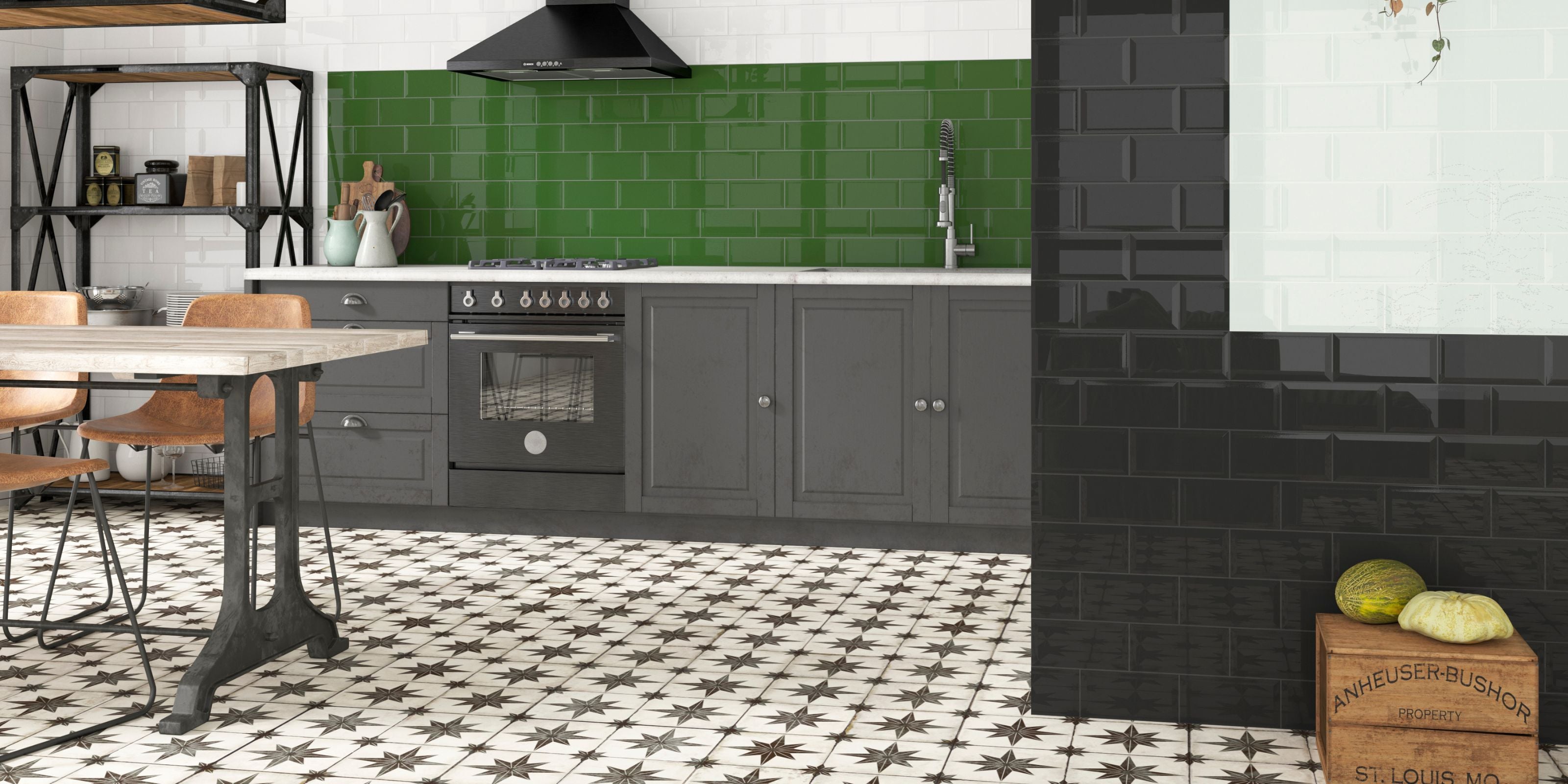
A traditional kitchen style embodies timeless elegance through classic design elements that have remained popular across generations. This enduring approach emphasizes quality craftsmanship, natural materials, and detailed millwork that creates warm, inviting spaces perfect for family gatherings and formal entertaining.
Cabinet design serves as the cornerstone of traditional style, featuring raised panel doors, decorative hardware, and furnishing elements that add visual depth and character. Crown moulding, corbels, and other architectural details enhance the sophisticated appearance while creating the formal atmosphere characteristic of traditional kitchens. These cabinets often showcase natural wood finishes or painted surfaces in cream, beige, and other warm neutral tones.
Colour palettes in traditional kitchens favor warm, inviting tones that create cosy atmospheres. Natural wood tones, creams, and soft beiges provide the foundation, often complemented by deeper accent colours, that don’t overpower the neutrals, like forest green or navy blue. These colour choices work harmoniously with natural materials to create spaces that feel both elegant and comfortable.
Natural materials play essential roles in authentic traditional design. Granite or solid wood countertops provide durability and natural beauty, while hardwood flooring adds warmth and character. Traditional kitchens often incorporate multiple textures through varied materials—smooth stone surfaces contrast beautifully with warm textured wood cabinetry and fabric elements.
The timeless appeal of traditional style ensures lasting value and broad market appeal. Unlike trend-driven designs that may quickly appear dated, traditional kitchens have already proven their elegance and functionality across decades. To find inspiration and visualize your options, explore a collection of traditional kitchen designs or curated elements that highlight the best of this enduring style. This longevity makes traditional style a practical choice for homeowners concerned about long-term value retention and fashionability.
Rustic and Farmhouse Kitchen Style
Rustic and farmhouse kitchen styles celebrate natural beauty and casual comfort through the use of reclaimed materials, weathered finishes, and vintage-inspired elements. These approaches create welcoming spaces that emphasize authenticity and connection to natural environments while maintaining modern functionality.
Natural wood cabinetry forms the foundation of rustic style, often featuring distressed or weathered finishes that add character and visual interest. These cabinets might showcase knots, grain patterns, and subtle imperfections that enhance their authentic appearance. Shaker-style doors and beadboard panels contribute to the casual, unpretentious aesthetic that defines farmhouse design.
Earthy colour schemes incorporating greens, blues, and warm neutrals create the perfect backdrop for rustic style elements. Sage green cabinets might pair beautifully with cream walls and natural wood accents, while soft blues can evoke coastal farmhouse aesthetics. These colour choices connect indoor spaces with natural elements, creating calming environments that promote relaxation and comfort.
Kitchen Sinks and Natural Materials
Signature elements like farmhouse sinks and butcher block countertops serve both functional and aesthetic purposes. The large, deep basin of an apron-front sink accommodates large pots and casual food preparation, while its prominent position creates a focal point that anchors the overall design. Butcher block surfaces provide warm, natural work areas that develop beautiful patina over time.
Textural variety distinguishes exceptional rustic and farmhouse kitchens from ordinary interpretations. The combination of natural stone backsplashes, reclaimed wood beams, wrought iron hardware, and vintage-inspired lighting creates rich, layered environments. Exposed brick walls or shiplap treatments on kitchen walls add architectural interest while reinforcing the rustic aesthetic.
Essential Elements of Kitchen Style
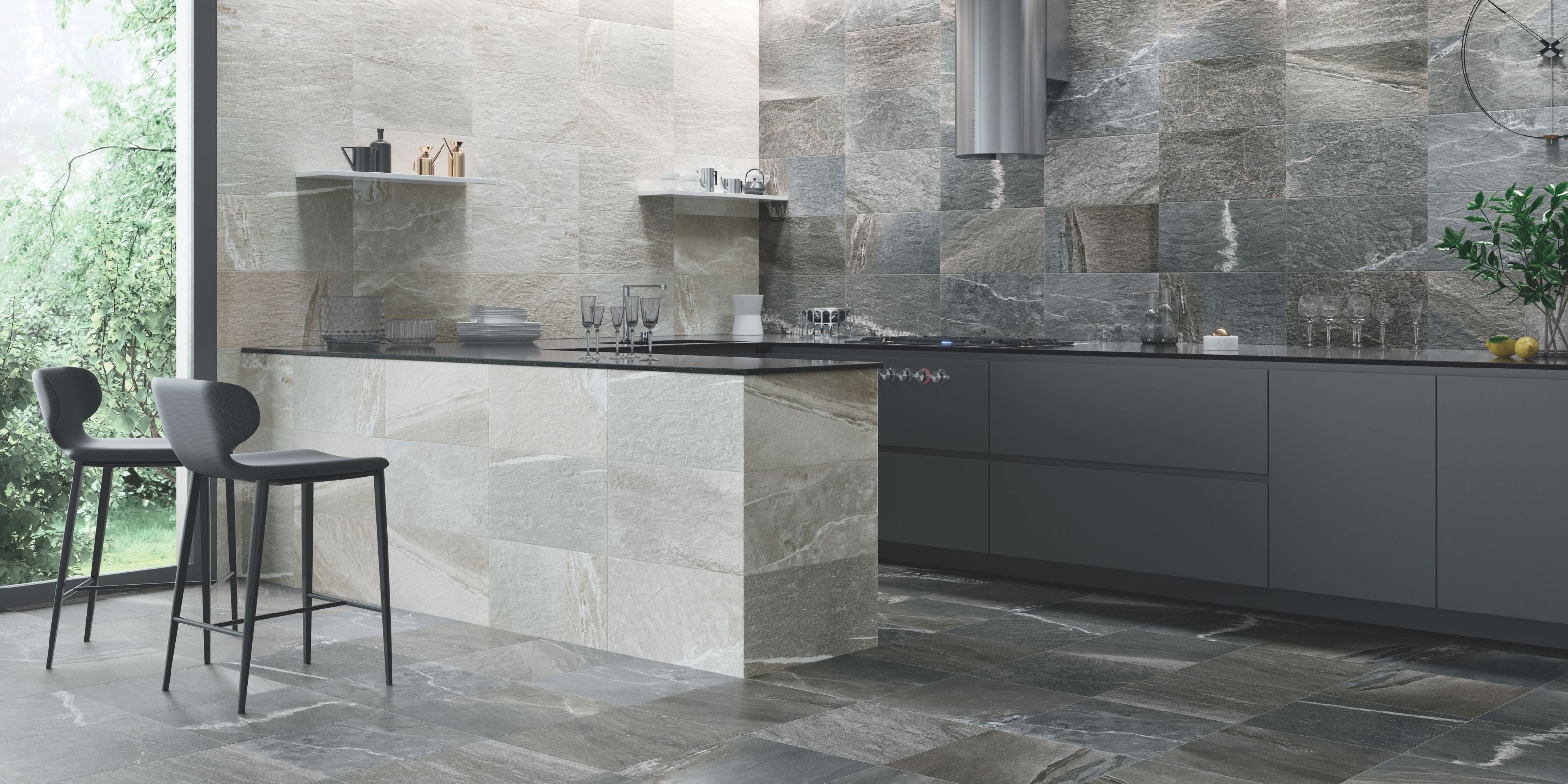
The success of any kitchen style depends on the careful coordination of several essential elements that work together to create a cohesive design vision. Understanding how cabinet design, colour schemes, lighting, and hardware selection interact helps ensure that your chosen style achieves both visual impact and functional excellence.
Cabinet design serves as the foundation of kitchen style identity, influencing everything from storage functionality to overall aesthetic appeal. The choice between frameless and framed construction, door styles, and finish options establishes the basic character of your kitchen while providing the structural framework for all other design decisions.
Colour psychology plays a significant role in creating the desired atmosphere within your kitchen space. Different colours evoke distinct emotional responses and can dramatically impact the perceived size and warmth of your culinary environment. Understanding these relationships helps you select colour schemes that support your lifestyle and design goals.
Lighting design transcends mere functionality to become a crucial style element that can enhance or detract from your overall design vision. The right combination of task, ambient, and accent lighting creates depth, highlights key features, and supports the daily activities that take place in your kitchen space.
Hardware selection might seem like a minor detail, but these small elements significantly impact the overall design cohesion. Cabinet pulls, hinges, faucets, and other metal elements create visual connections throughout the space while providing opportunities to reinforce your chosen style through material and finish selection.
When selecting colours, consider how they interact with other elements in your kitchen, including lighting, cabinetry, flooring, and kitchen splashbacks. Splashbacks are designed to protect kitchen walls from splashes and stains, and are available in various thicknesses to enhance durability and image quality. The surface or image of a splashback can be easily wiped clean, making maintenance simple. Many splashbacks offer a hassle-free, tool-free installation process, so fitting them is straightforward and does not require expensive tools or extra costs. Reliable delivery options are also important when ordering splashbacks or kitchen materials to ensure your project stays on schedule. Additionally, splashbacks can add a hand-finished touch or striking contrast to your kitchen design, serving as both a functional and decorative element. Coordinating colour palettes with natural materials and warm neutrals can create harmonious spaces that feel both stylish and timeless. Moreover, incorporating accent colours through accessories or backsplashes allows for flexibility and personalization without overwhelming the overall design.
Grey Kitchen Cabinets and Other Designs and Finishes
Grey kitchen cabinets have become a popular choice for modern and transitional kitchen styles due to their versatile and sophisticated appeal. The shade of grey you select can greatly influence the overall mood of your kitchen—light greys create a bright, airy space, while darker greys add depth and drama. Beyond colour, cabinet construction and finish options play a vital role in achieving the desired look and functionality.
Frameless cabinet construction, popular in contemporary and modern styles, maximizes storage space while creating clean, streamlined appearances. This European-style approach eliminates the face frame that traditionally surrounds cabinet openings, allowing for wider drawers and easier access to stored items. The resulting smooth surfaces support minimalist aesthetics while providing practical storage advantages.
Framed construction, preferred in traditional and farmhouse styles, incorporates face frames that add structural strength and visual detail. These frames create shadow lines and depth that enhance the traditional aesthetic while providing mounting points for hinges and other hardware. This construction method supports the detailed millwork and decorative elements essential to classic design styles.
Popular cabinet colours reflect current design trends while offering varying degrees of longevity and versatility. Baltic Blue creates dramatic focal points perfect for contemporary or coastal styles, while Matt Taupe provides sophisticated neutrality that works across multiple design approaches. Champagne finishes offer warm elegance suitable for transitional styles, while Glacier tones provide crisp, clean backgrounds for modern aesthetics.
The choice between matt and polished, high gloss finishes significantly impacts both visual appearance and maintenance requirements. High gloss surfaces reflect light to create bright, spacious feelings but show fingerprints and require frequent cleaning. Matt finishes provide sophisticated, understated appearances that hide minor imperfections while offering easier maintenance for busy households.
Custom cabinet options allow for unique kitchen layouts and specialized storage solutions that maximize functionality while supporting specific style goals. Built-in spice racks, pull-out trash systems, and specialized storage for small appliances can be seamlessly integrated into custom designs that perfectly fit your space and lifestyle requirements.
Colour Psychology in Kitchen Design
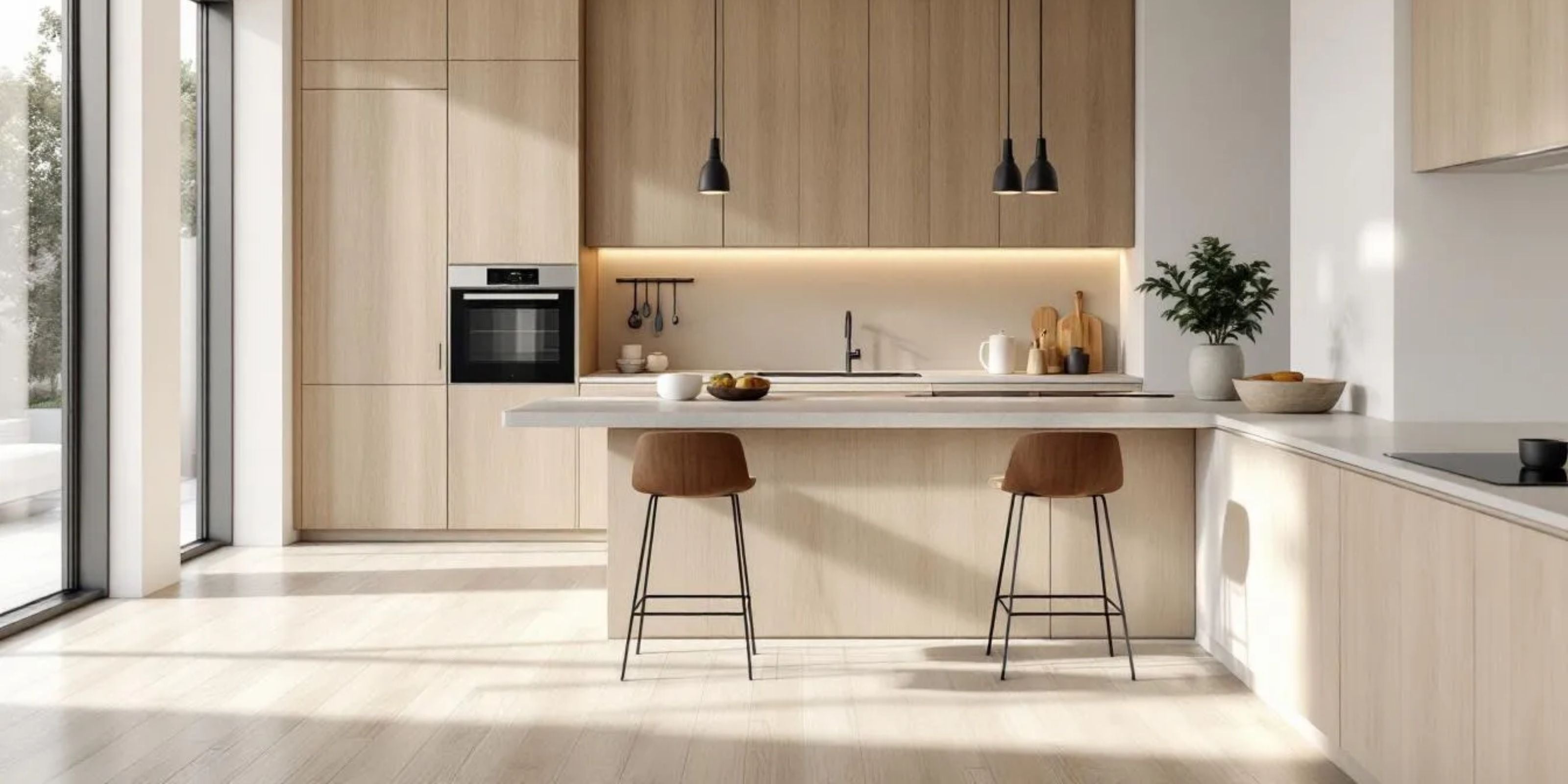
Understanding colour psychology enables you to create kitchen environments that support your desired mood and lifestyle while enhancing the overall functionality of your culinary space. Different colours evoke specific emotional responses and can dramatically impact how you and your guests experience your kitchen.
Blue creates calming, refreshing atmospheres that promote relaxation and peaceful food preparation. Whether used as a primary cabinet colour or accent element, blue tones can make kitchens feel more spacious while providing sophisticated colour foundation. Navy blue offers dramatic elegance, while lighter blue shades create airy, coastal atmospheres perfect for casual entertaining.
Beige and cream provide versatile, warm foundations that work harmoniously with virtually any accent colour or style approach. These neutral tones create inviting environments that feel comfortable and welcoming while offering excellent longevity and broad appeal. Warm neutrals particularly suit traditional and transitional styles where comfort and timelessness are priorities.
Green tones connect indoor spaces with natural elements, creating fresh, organic atmospheres that promote well-being and comfort. Sage green cabinets can create calming environments perfect for morning coffee routines, while deeper forest greens add sophistication and drama. Green works particularly well in farmhouse and traditional styles where natural connections are emphasized.
Grey serves as a modern neutral that pairs beautifully with various accent colours while providing sophisticated backdrops for contemporary and transitional styles. Light greys create spacious, airy feelings, while darker shades add drama and sophistication. The versatility of grey makes it an excellent choice for homeowners who want to experiment with different accent colours over time.
Bold colours like black, red, and pink create dramatic style statements that can transform ordinary kitchens into extraordinary spaces. However, these intense colours require careful balance with neutral elements to prevent overwhelming the space. Black cabinets paired with white countertops create striking contemporary looks, while red accents and undertones can add warmth and energy to neutral foundations.
Kitchen Layout and Workflow
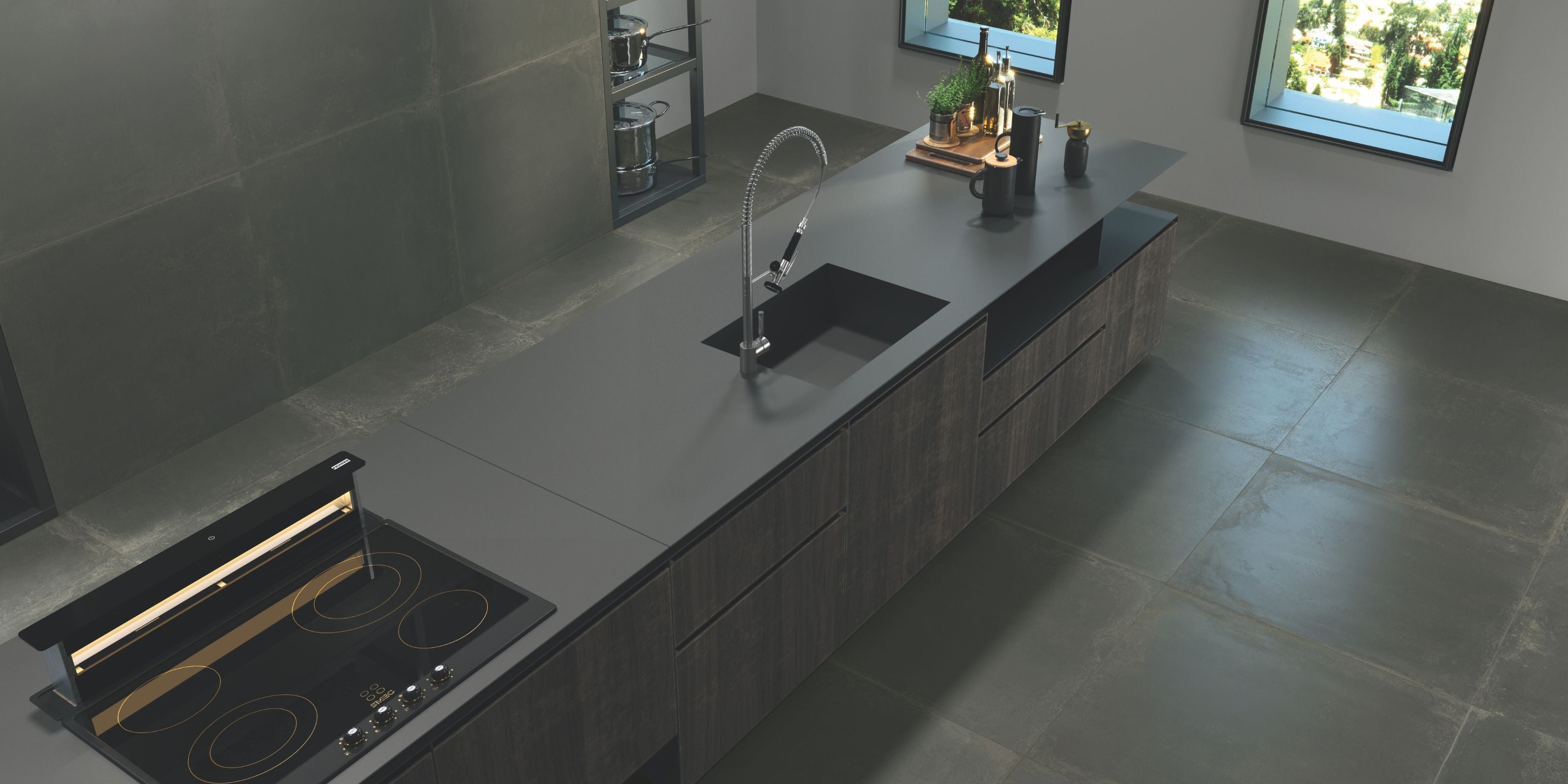
A well-planned kitchen layout is truly the heart of a modern home, shaping not only how your space looks but also how it feels and functions every day. The right layout brings together beauty and practicality, making your kitchen a place you’ll love to spend time in—whether you’re preparing a quick breakfast or hosting a lively dinner party.
At the core of an efficient kitchen is the classic “work triangle,” which connects the kitchen sink, hob, and refrigerator. This time-tested concept ensures that the most-used areas are within easy reach, streamlining your workflow and making every action, from chopping vegetables to cleaning up, feel smooth and effortless. By thoughtfully arranging these key elements, you can reduce the time spent moving around and make the cooking process more enjoyable.
When designing your kitchen layout, consider the size and shape of your room, as well as the placement of doors, windows, and appliances. A spacious layout not only provides room to move but also makes cleaning and maintenance easier, helping your kitchen stay looking its best for years to come. The right cabinetry and appliance selection can maximize storage and efficiency, while also adding character and sophistication to your home.
Protecting your kitchen walls is another important aspect of layout planning. Kitchen splashbacks are a perfect choice for safeguarding against splashes and spills, and they come in a wide range of sizes, hues, and finishes to suit any style. Whether you prefer the classic look of traditional kitchens or the sleek lines of a modern design, splashbacks provide an easy-to-clean surface that adds both function and flair.
Grey and greys remain popular choices for kitchen walls and cabinetry, offering a neutral backdrop that complements a variety of appliances and design preferences. These shades bring a touch of understated elegance and can make your kitchen feel brighter and more spacious, especially when paired with light-reflecting surfaces or bold accent tiles.
As you start the kitchen renovation process, take time to browse different layouts and review what works best for your needs. Think about how you like to work in the kitchen, your cleaning preferences, and the overall feel you want to create. Don’t hesitate to test out different arrangements—sometimes a small change in the placement of your kitchen sink or hob can make a big difference in the way your kitchen functions.
Remember, a kitchen renovation is a significant investment, but a well-designed layout can bring lasting value and joy to your home. With careful planning, attention to detail, and a touch of creativity, you can create a kitchen that not only meets your needs but also reflects your unique style and brings you satisfaction for years to come. If you’re unsure where to begin, consider seeking professional advice to help guide your choices and ensure your new kitchen is the perfect fit for your lifestyle.
Kitchen Renovation Style Planning and Implementation
Successfully implementing your chosen kitchen style requires careful planning, realistic budget assessment, and clear understanding of the renovation process. Whether you’re planning a complete overhaul or strategic updates, proper planning ensures that your project achieves both aesthetic and functional goals within your timeline and budget constraints.
The step-by-step process for determining your ideal kitchen style begins with honest assessment of your current situation, lifestyle needs, and long-term goals. Understanding these factors helps narrow down style options while ensuring that your final choice will serve you well for years to come.
Budget considerations vary dramatically between different kitchen style renovations, with some approaches requiring significant structural changes while others can be achieved through surface updates and strategic improvements. Understanding these cost implications helps you make informed decisions about which elements to prioritize and where to invest your renovation budget most effectively.
Timeline expectations differ based on the scope of your project and chosen implementation approach. Complete kitchen renovations typically require 6-12 weeks for professional installation, while DIY updates and surface improvements can often be completed in days or weeks. Proper timeline planning prevents disruption to your household routines while ensuring quality results.
For more inspiration and ideas, check out our kitchen style collections and guides to help you plan your perfect space.
Choosing Your Kitchen Style
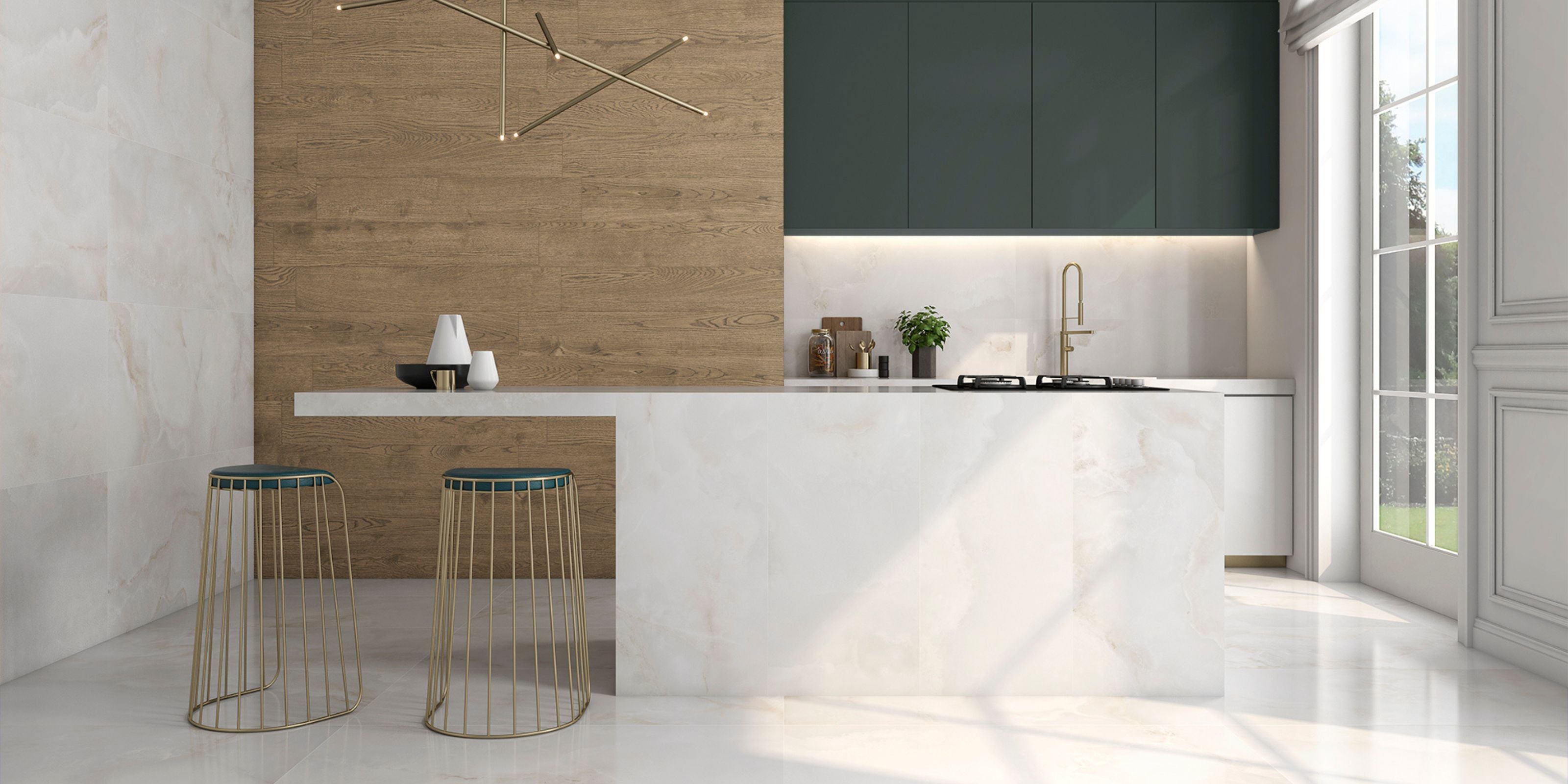
Assessment of your existing home architecture provides crucial context for style selection, as certain approaches work more harmoniously with specific architectural periods and design elements. A Victorian home might naturally accommodate traditional or cottage styles, while a contemporary residence could perfectly suit modern or industrial approaches.
Lifestyle evaluation encompasses your cooking habits, entertaining frequency, and family composition to ensure that your chosen style supports rather than hinders your daily activities. Serious cooks might prioritize functional elements like large islands and professional appliances, while frequent entertainers might emphasize open layouts and attractive serving areas.
Long-term style preferences should take precedence over trending design movements that may quickly appear dated. While it’s natural to be influenced by current design magazines and social media inspiration, focusing on timeless elements and personal design choices ensures lasting satisfaction with your investment. Sampling materials and colours before making final decisions is imperative to avoid costly mistakes and ensures that your chosen elements work harmoniously together.
Creating mood boards and style inspiration collections helps visualize how different elements will work together while communicating your vision to contractors and designers. Digital tools and physical samples both play important roles in developing a clear, actionable design plan that guides decision-making throughout the renovation process.
Cost and Budget-Friendly Style Updates
Paint transformations offer the most cost-effective approach to dramatic style changes, allowing you to completely transform cabinet appearance and wall colours for a fraction of renovation costs. Repainting your kitchen cabinetry combined with replacing the existing handles, to better suit the new culour, can give your kitchen a major facelift on a budget. This cost-effective update refreshes the look of your cabinets with a durable, attractive finish while modern hardware instantly enhances style and functionality, transforming the overall kitchen appearance without the need for a full renovation.
Hardware replacement provides instant style modernization that can dramatically impact overall kitchen appearance. Updating cabinet pulls, hinges, and other metal elements creates immediate visual improvements while reinforcing your chosen design style. This affordable option offers excellent return on investment while providing satisfying immediate results.
A kitchen splashback installation creates focal point style enhancement that can completely transform kitchen appearance while providing practical protection for kitchen walls. Whether you opt for classic subway tile, natural stone, or bold patterned options, new backsplashes offer excellent opportunities to introduce colour, texture, and visual interest to your space.
Lighting updates complement and enhance your chosen kitchen style while improving functionality and ambiance. Replacing outdated fixtures with contemporary options, adding under-cabinet task lighting, or installing decorative pendant lights over islands can significantly impact both appearance and usability of your kitchen space.
Accessory and décor changes provide subtle style refinements that can refresh your kitchen appearance without major investment. New window treatments, decorative bowls, artwork, and plants can introduce colour and personality while supporting your overall design vision. These elements offer flexibility to adjust your style over time as preferences evolve.
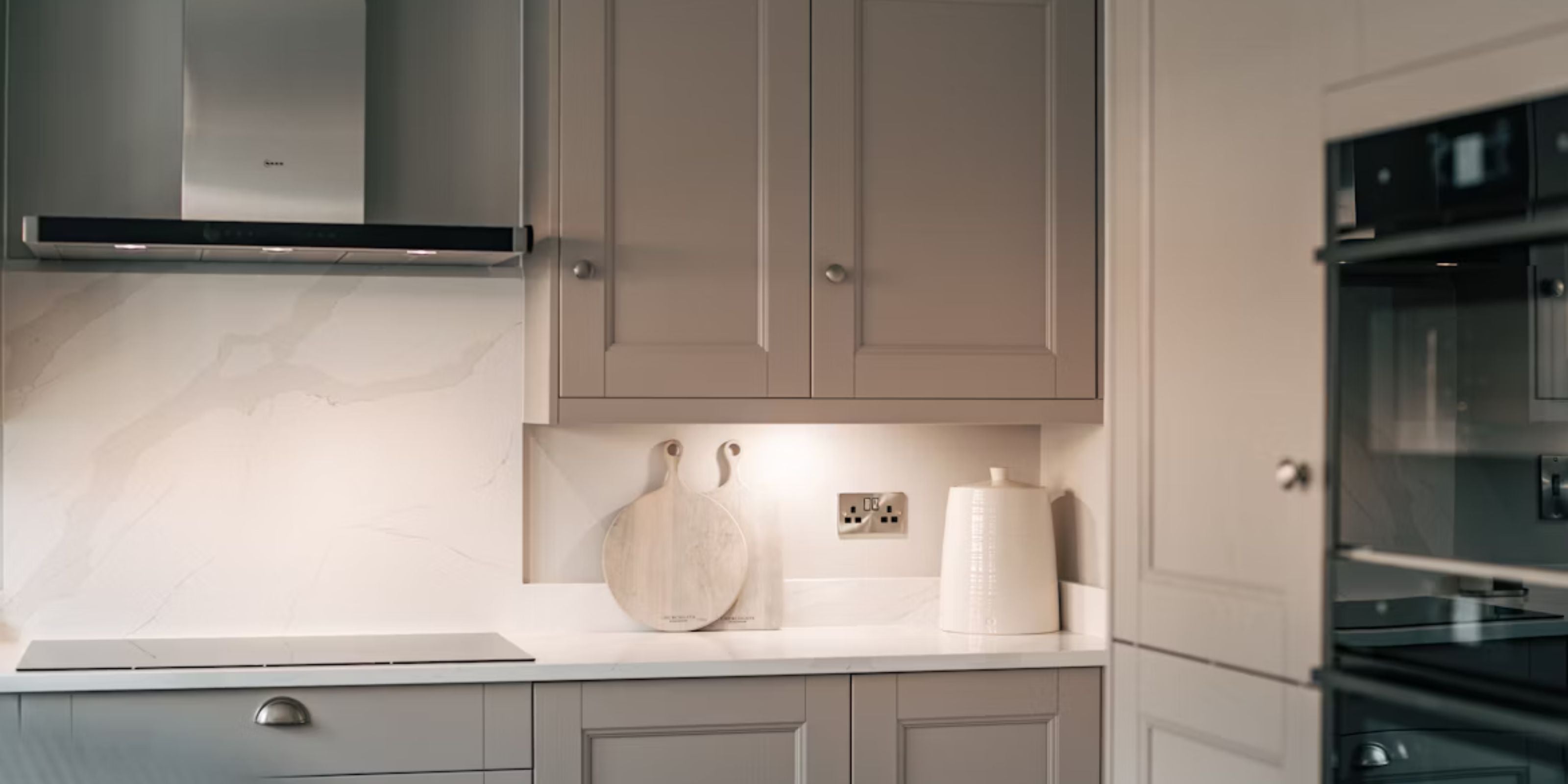
Frequently Asked Questions
What kitchen style adds the most value to my home?
Transitional and contemporary kitchen styles typically add the most value to homes because they appeal to the broadest range of potential buyers. These styles combine timeless elements with modern functionality, avoiding overly trendy features that might quickly appear dated. Neutral colour palettes and quality materials further enhance resale appeal, with most real estate professionals recommending these approaches for maximum return on investment.
How do I choose between matt and high gloss cabinet finishes?
The choice between matt and high gloss finishes depends on your lifestyle, maintenance preferences, and desired aesthetic. High gloss finishes reflect light to make spaces appear larger and brighter, but they show fingerprints, water spots, and scratches more readily than matt options. Matt finishes offer sophisticated, understated appearances with easier maintenance requirements, making them ideal for busy households or those preferring subtle elegance over dramatic shine.
Can I mix different kitchen styles in an open floor plan?
Successfully mixing kitchen styles in open floor plans requires careful attention to colour coordination, material consistency, and visual flow between spaces. The key is identifying unifying elements like flooring, wall colour, or metal finishes that create connection while allowing each area to express distinct character. Transitional approaches work particularly well for this challenge, as they naturally blend traditional warmth with contemporary functionality.
What are the most timeless kitchen style choices?
Traditional and transitional kitchen styles offer the greatest longevity because they emphasize quality craftsmanship and classic proportions over trendy elements. White or cream cabinetry, natural stone countertops, and neutral colour schemes provide timeless foundations that can be updated with accessories and hardware as preferences change. These approaches focus on fundamental design principles rather than fashion-driven details that may quickly appear outdated.
How long does a complete kitchen style renovation typically take?
Complete kitchen renovations generally require 6-12 weeks from demolition to final installation, depending on the project scope and complexity. This timeline includes demolition (1-2 weeks), structural and electrical work (2-3 weeks), cabinet installation (1-2 weeks), countertop templating and installation (1-2 weeks), and final details like backsplashes and trim work (1-2 weeks). Verification successful waiting periods for custom elements like cabinetry can extend timelines, particularly during busy construction seasons.
